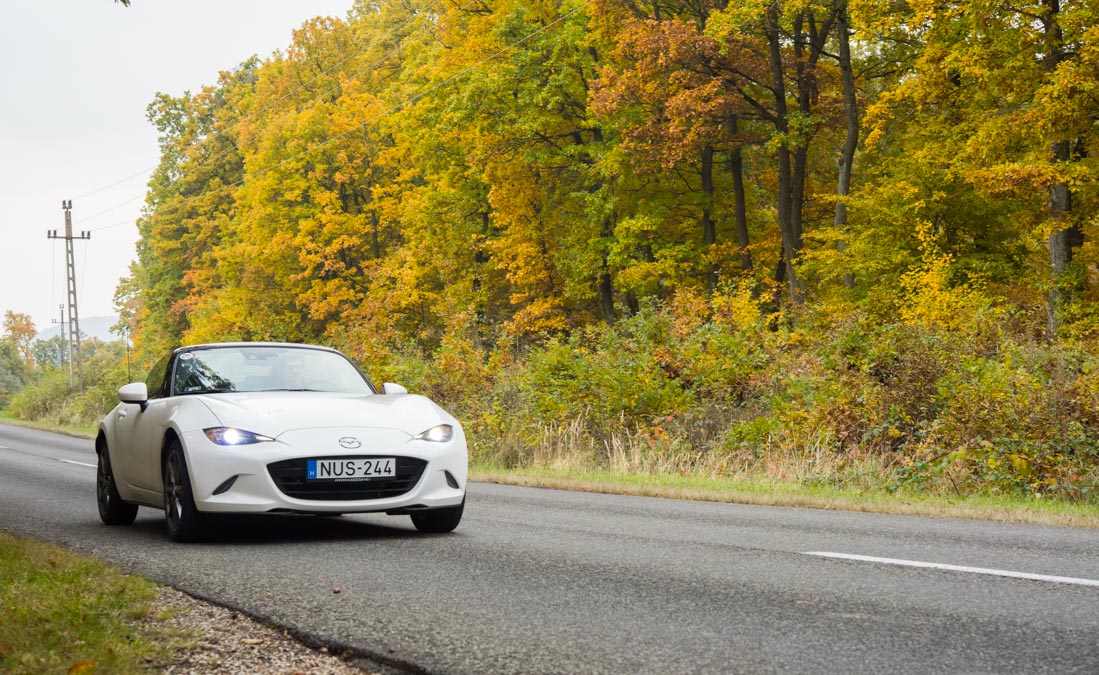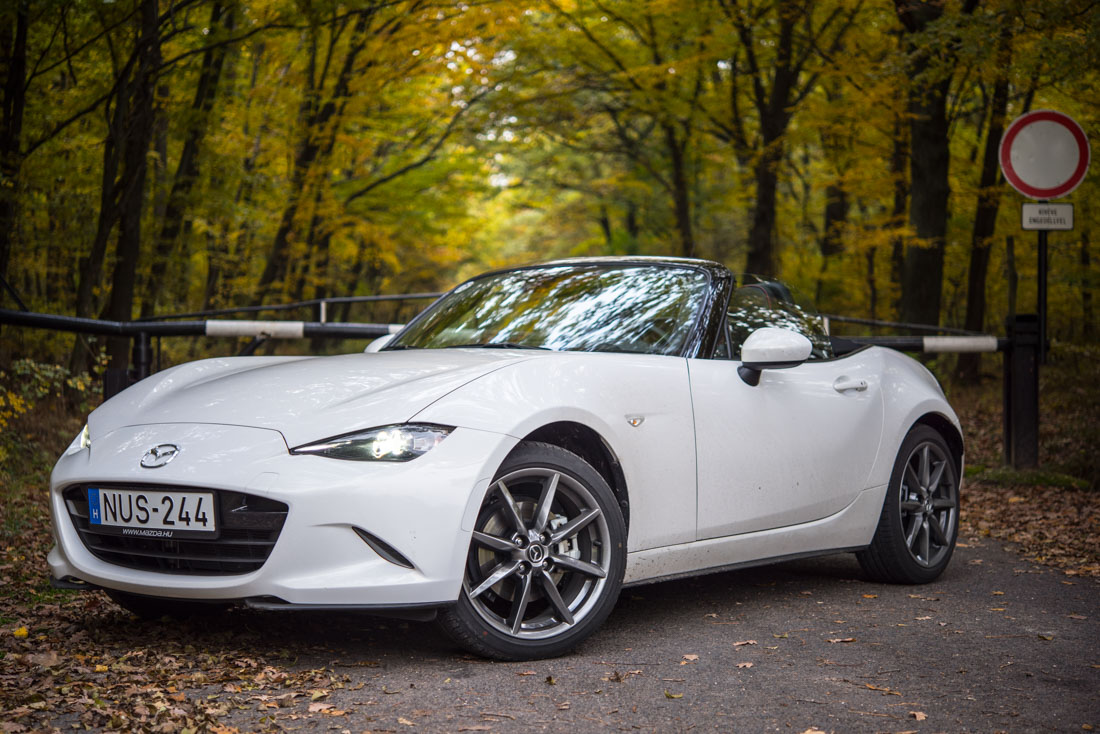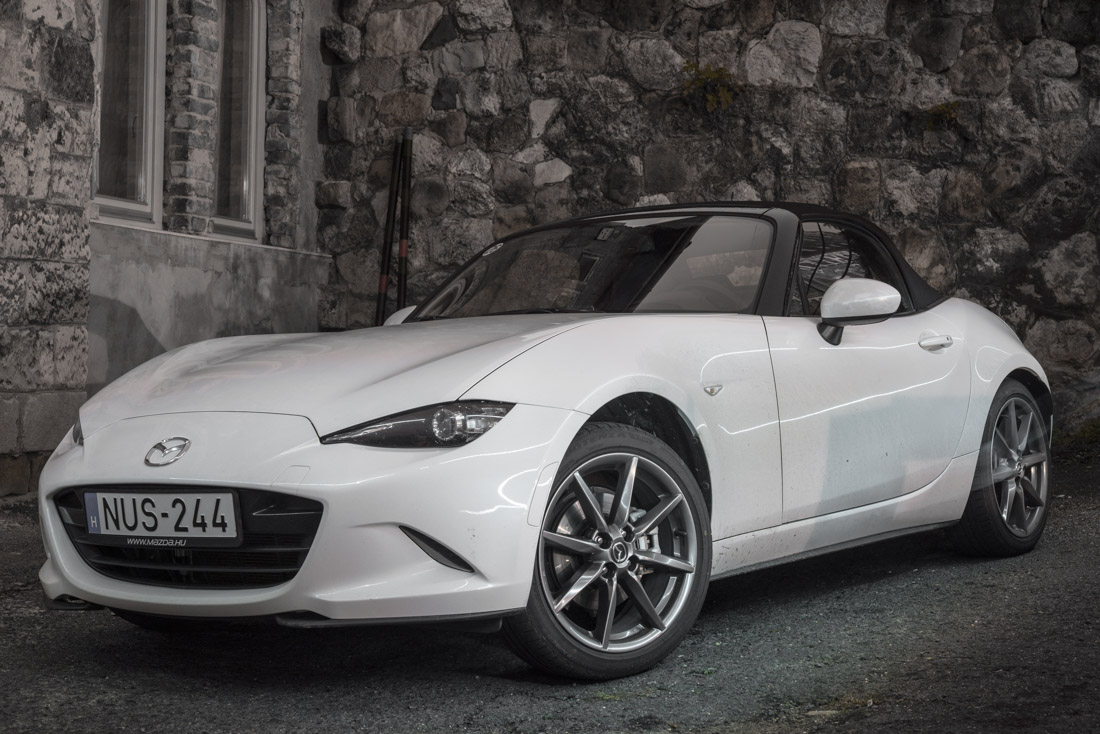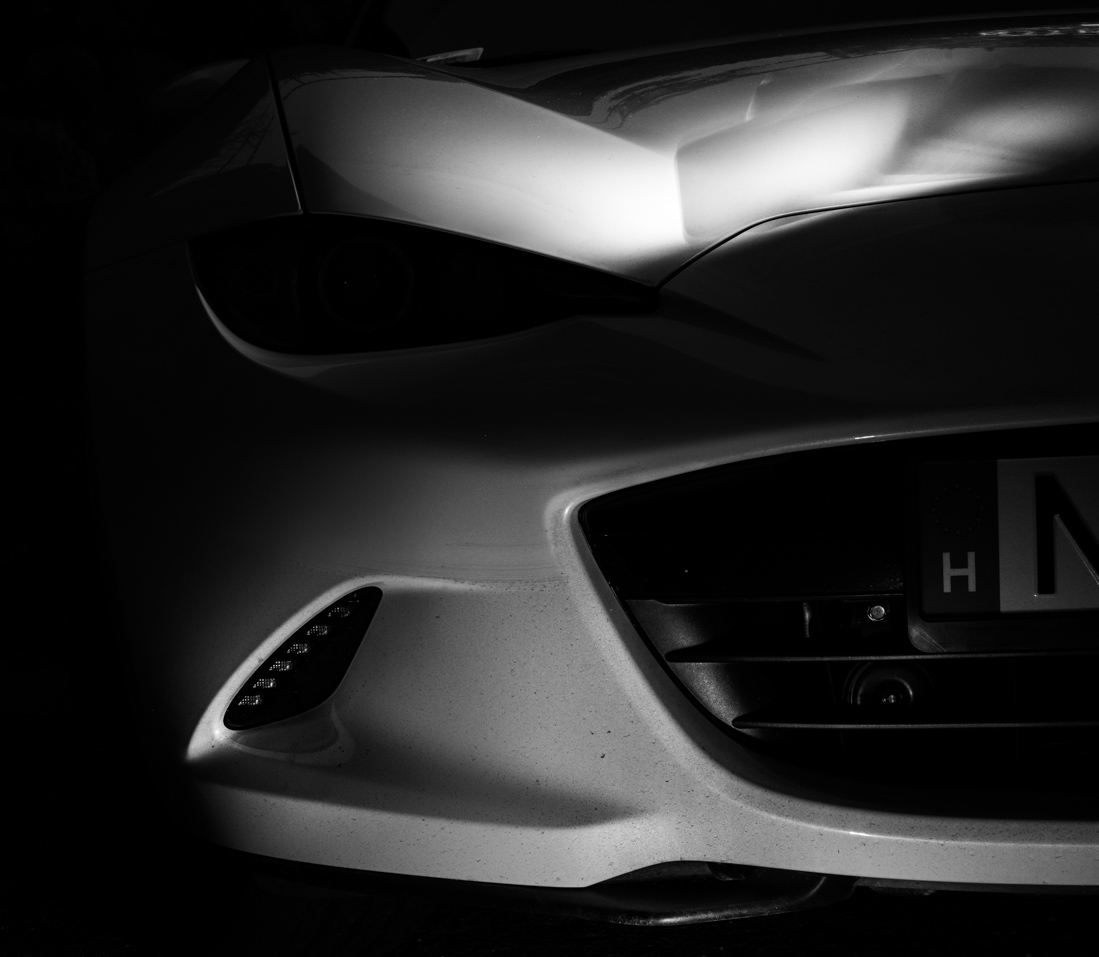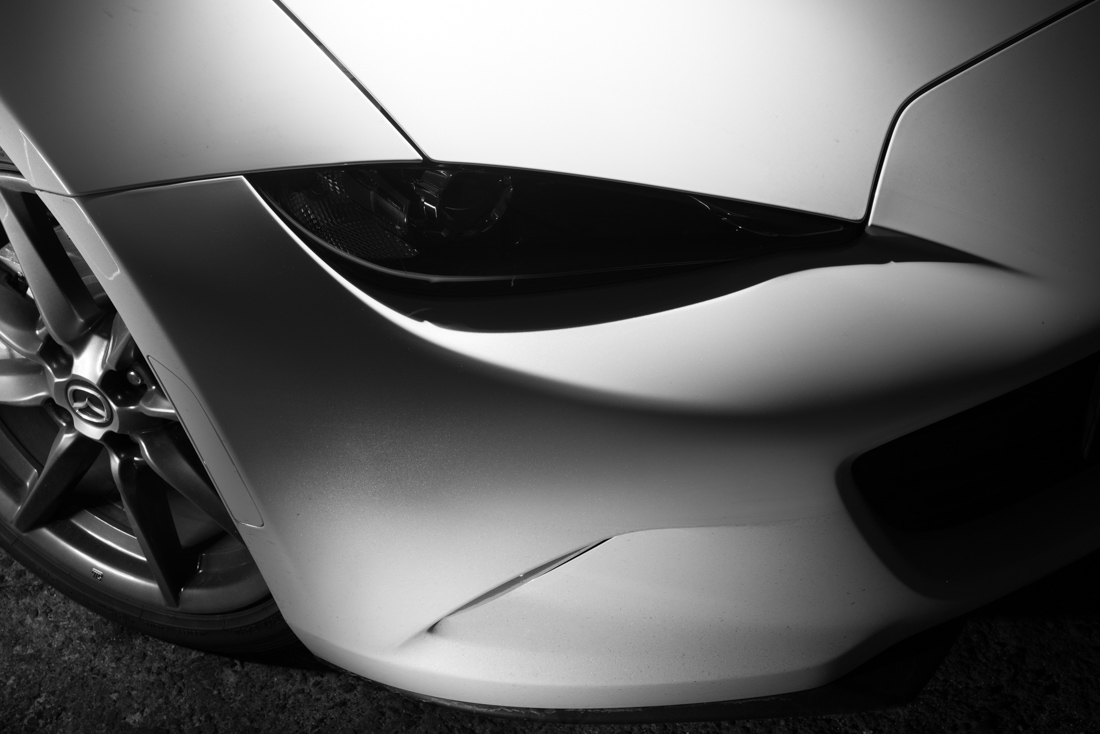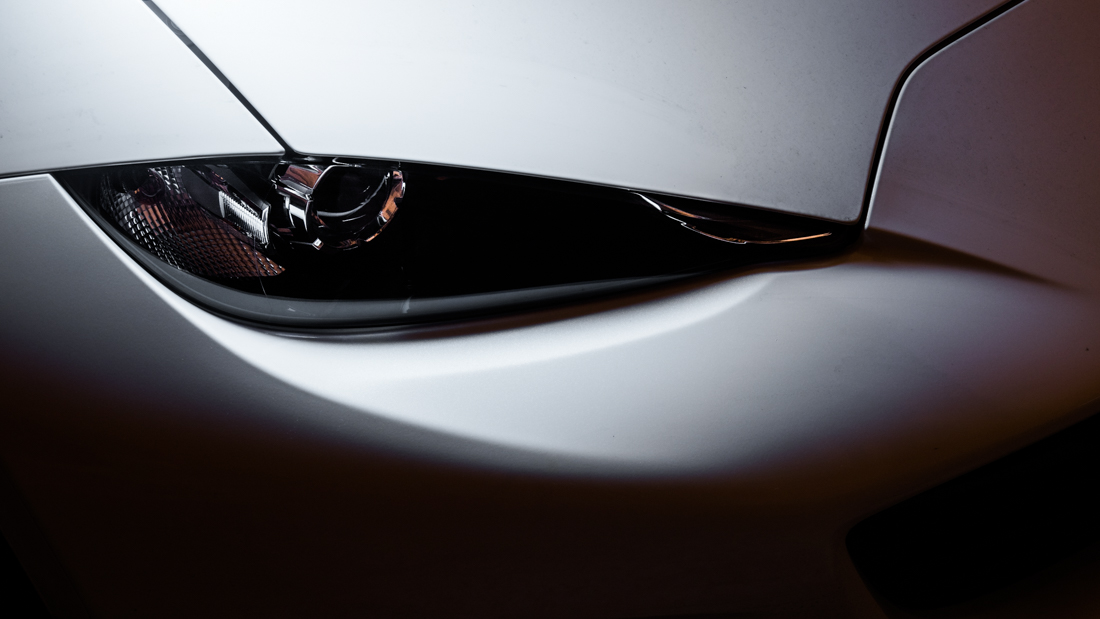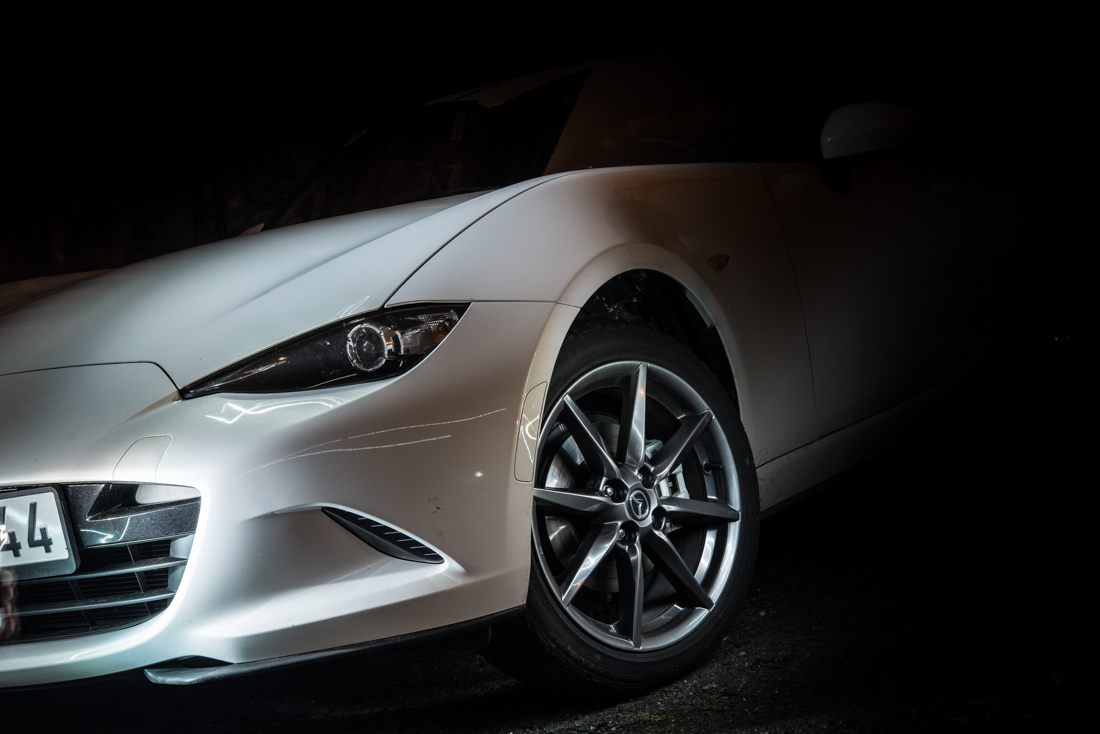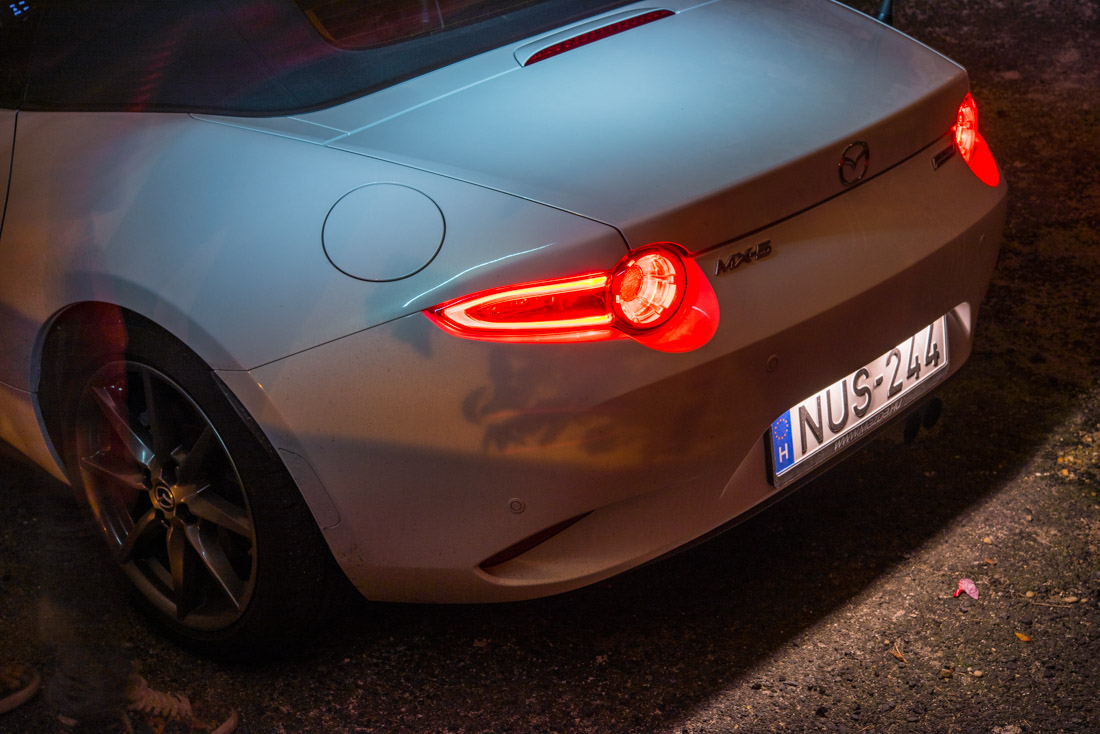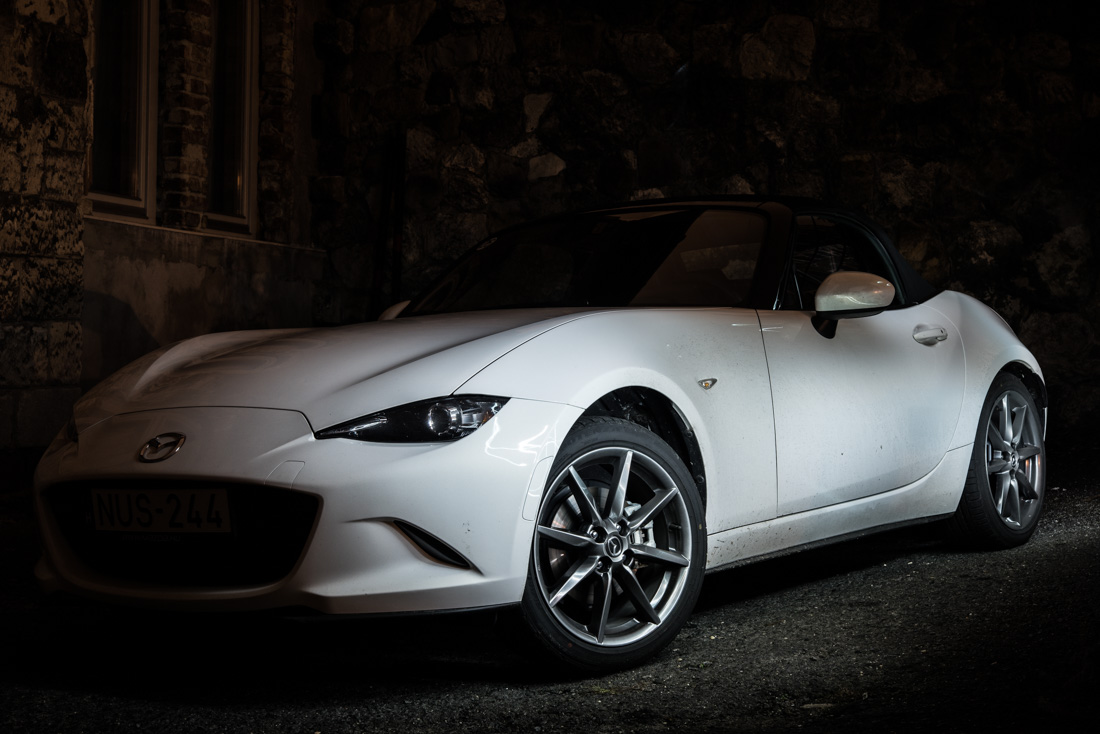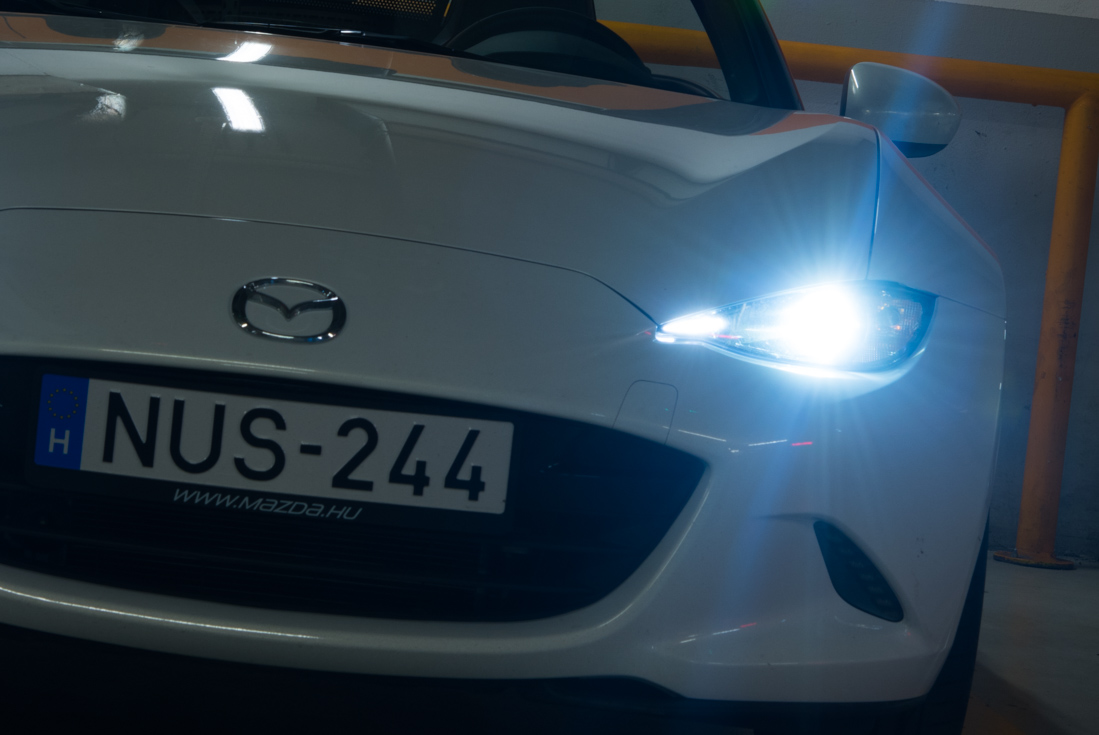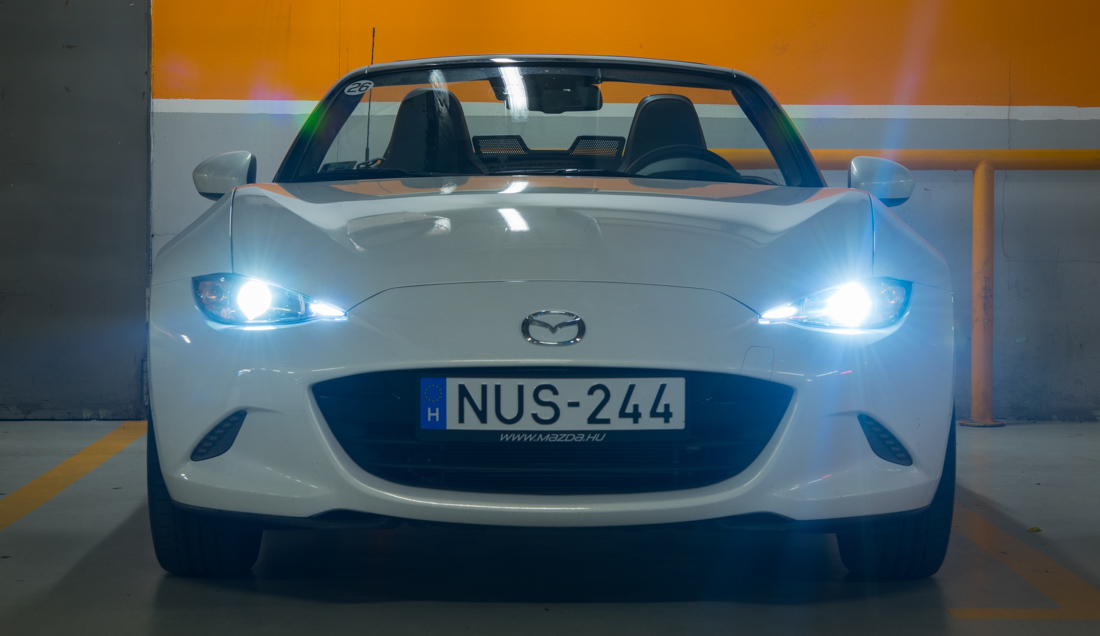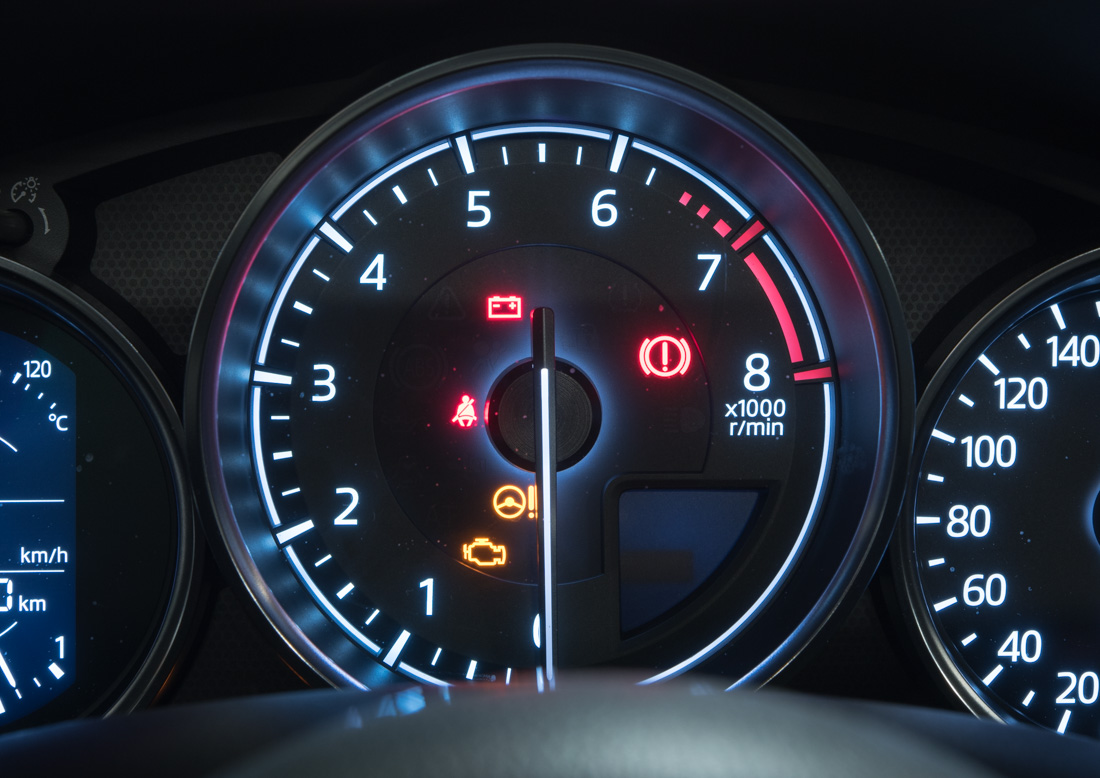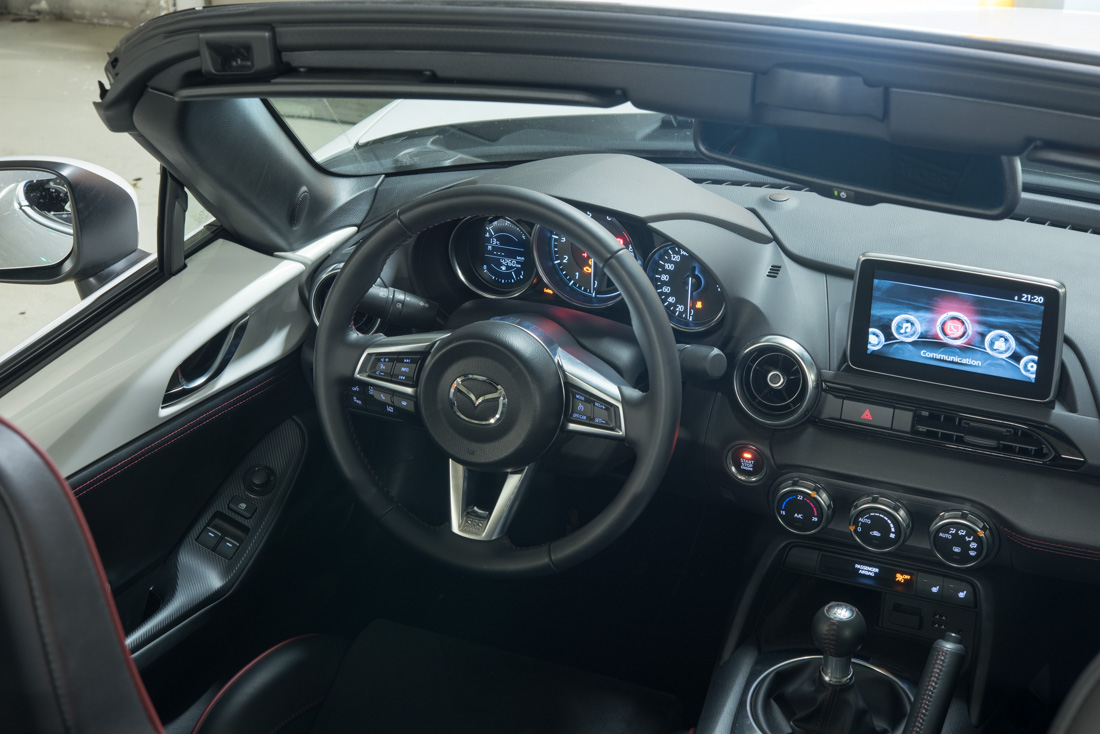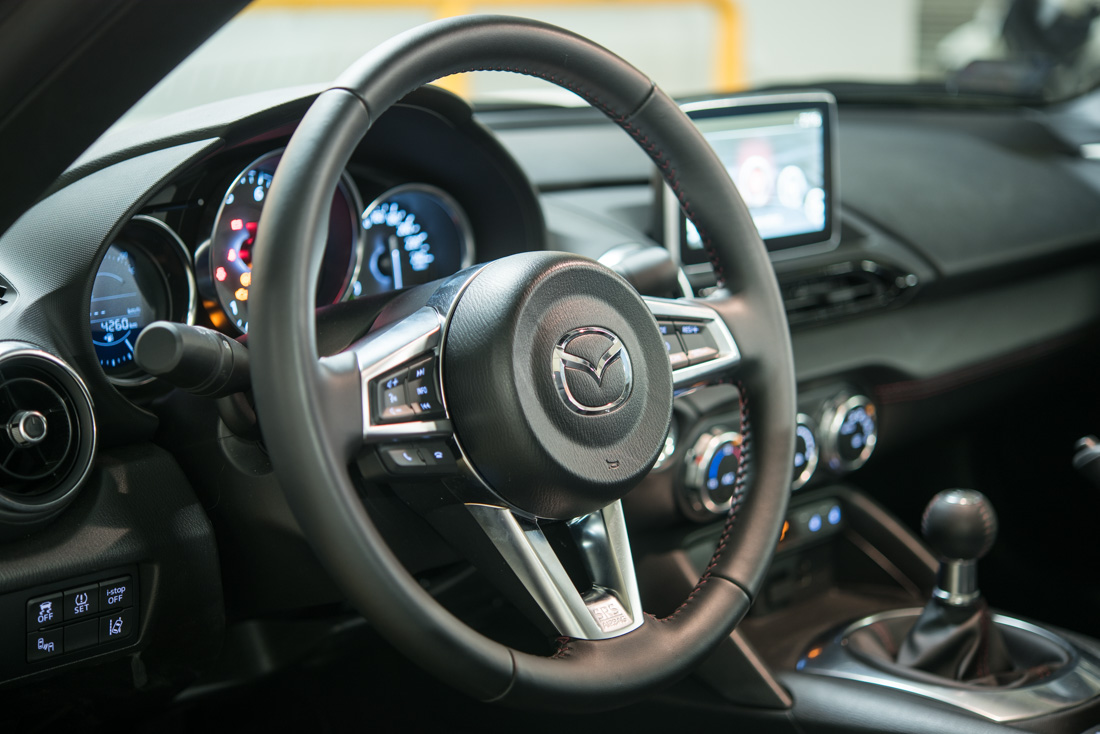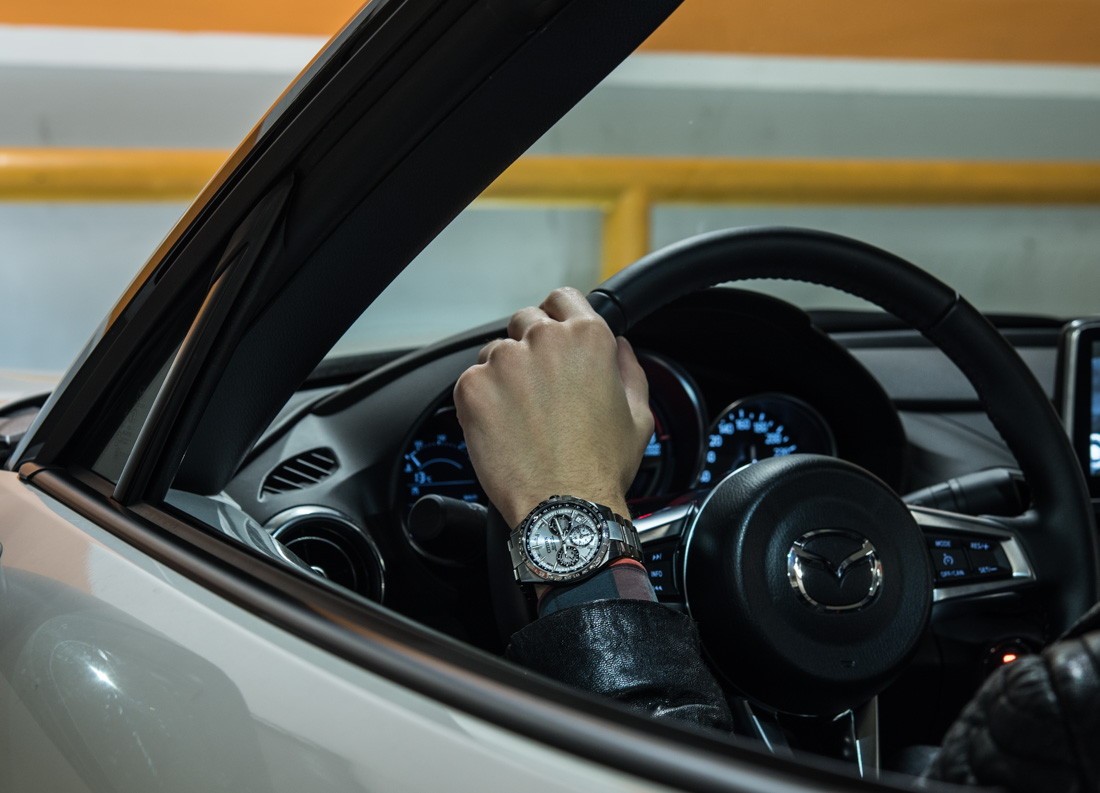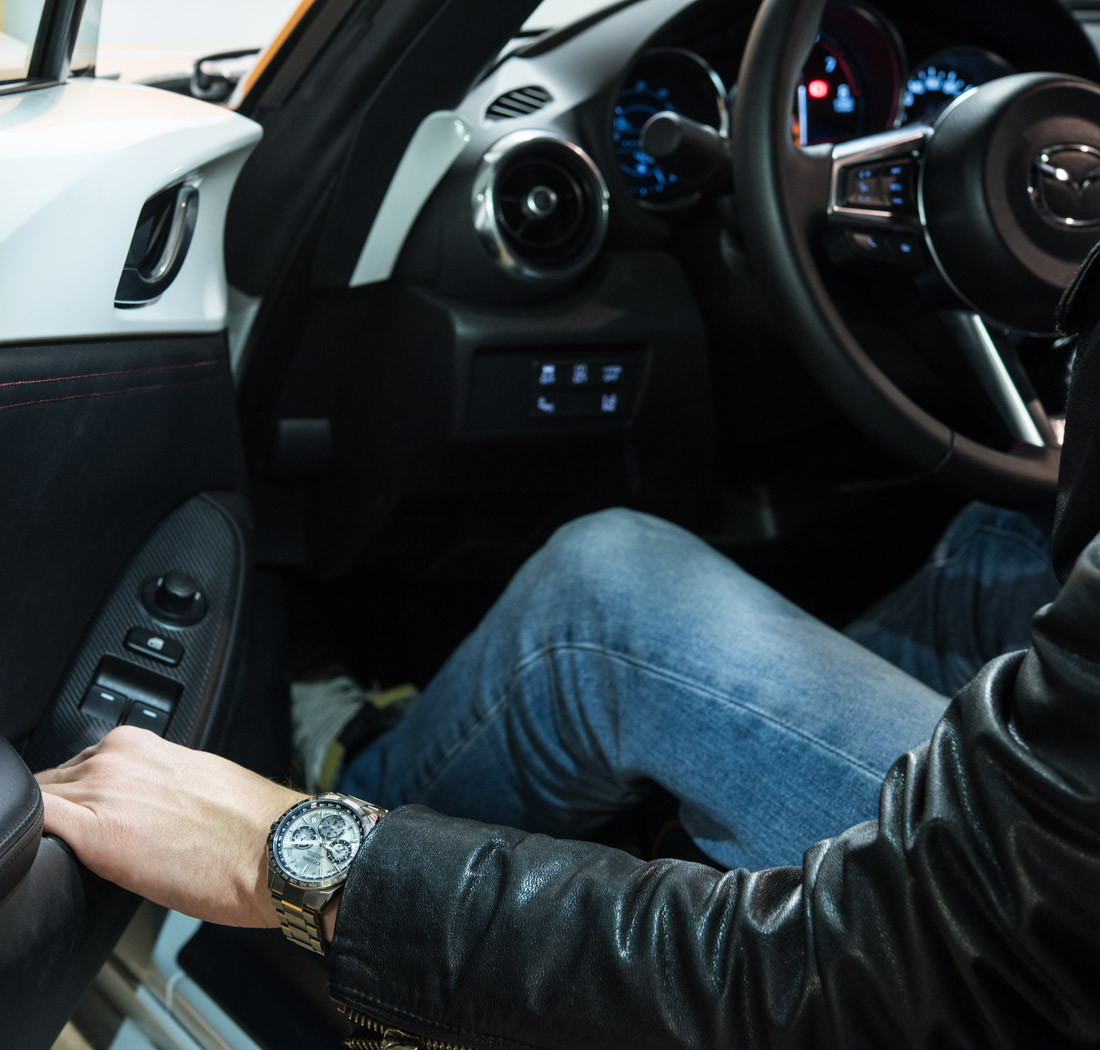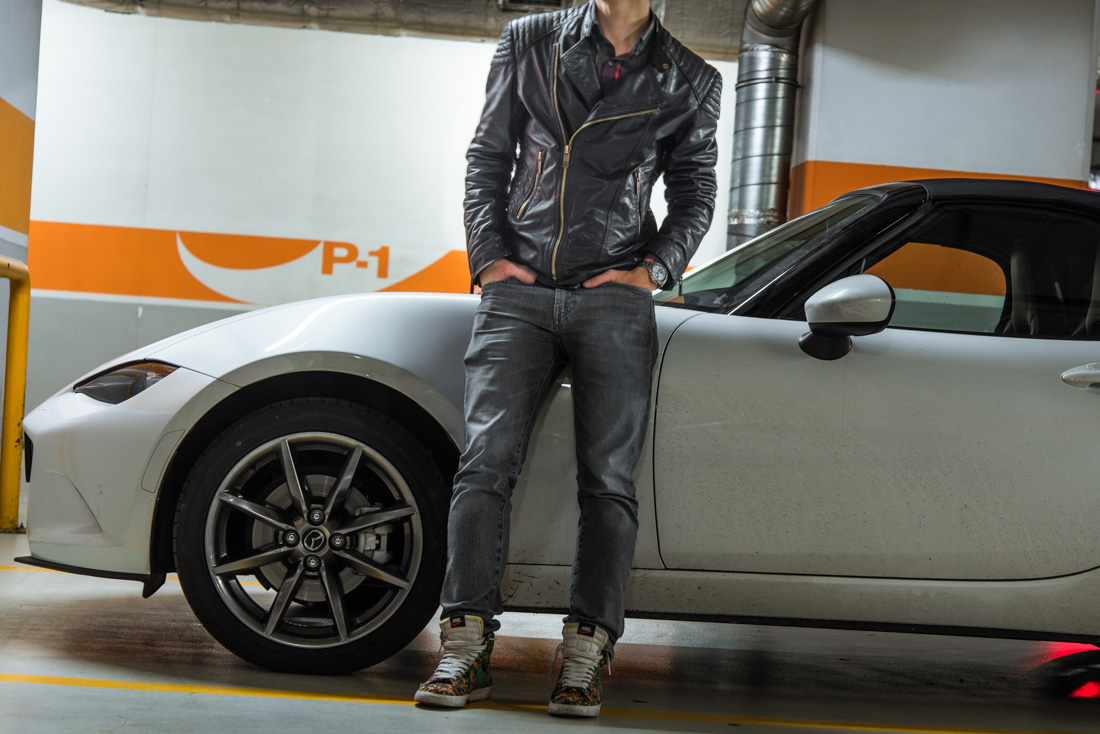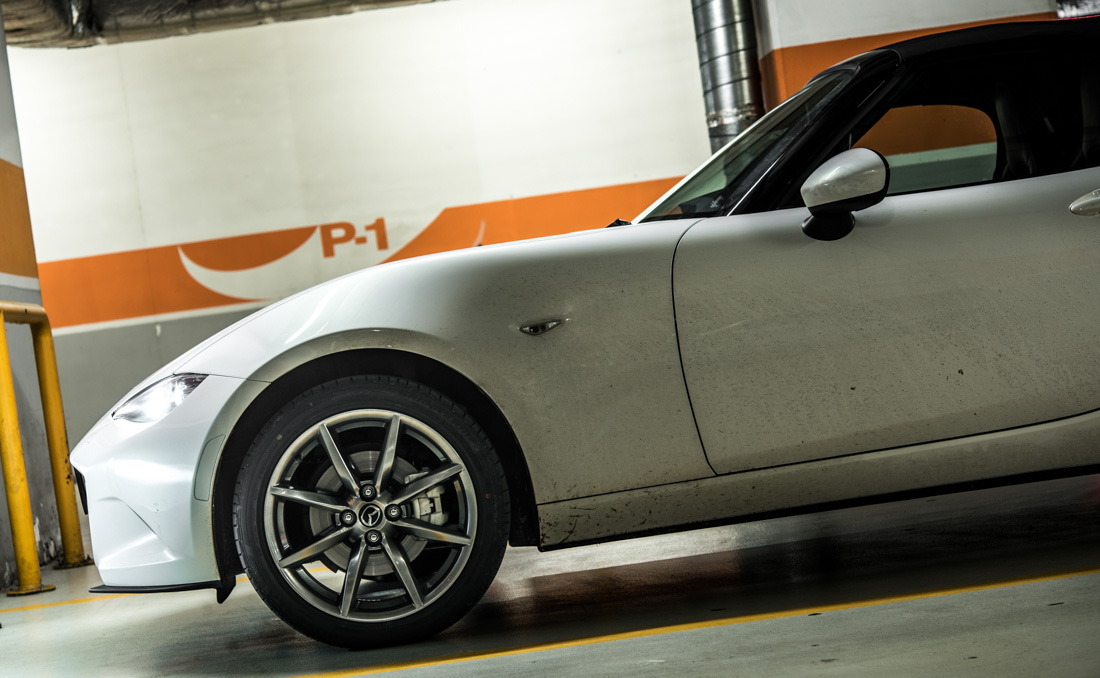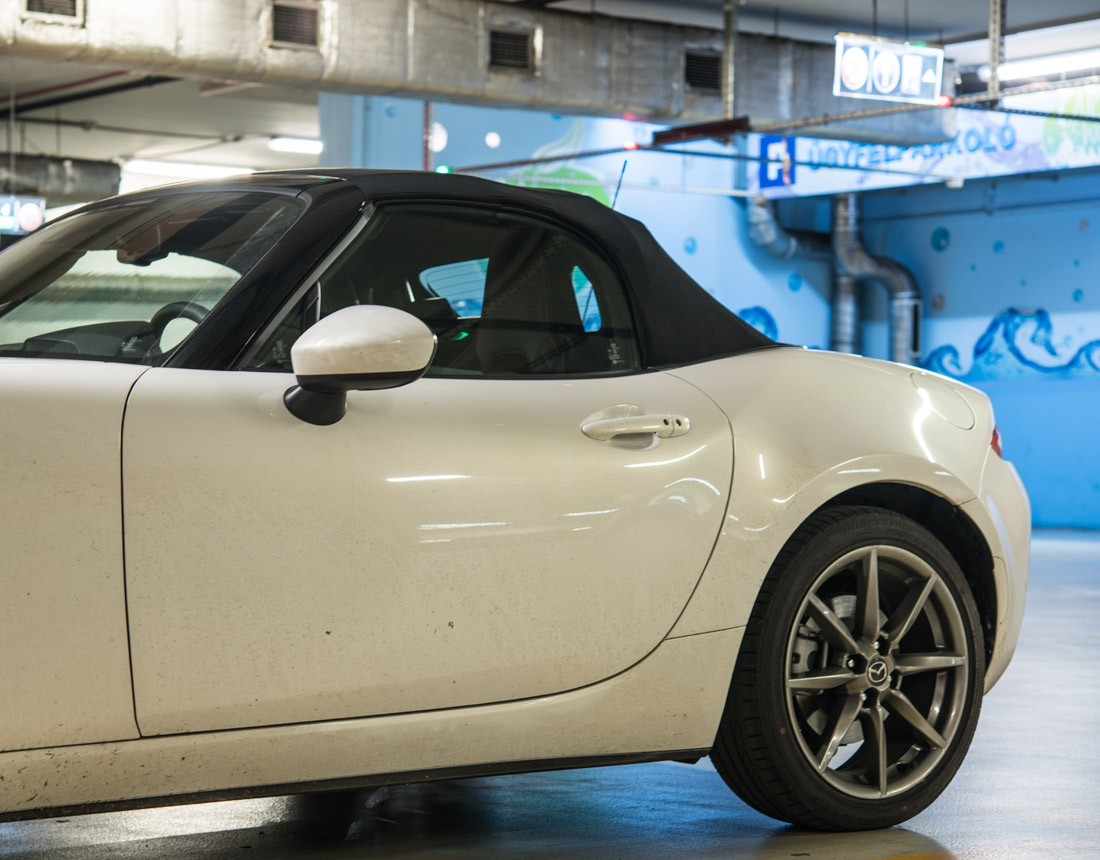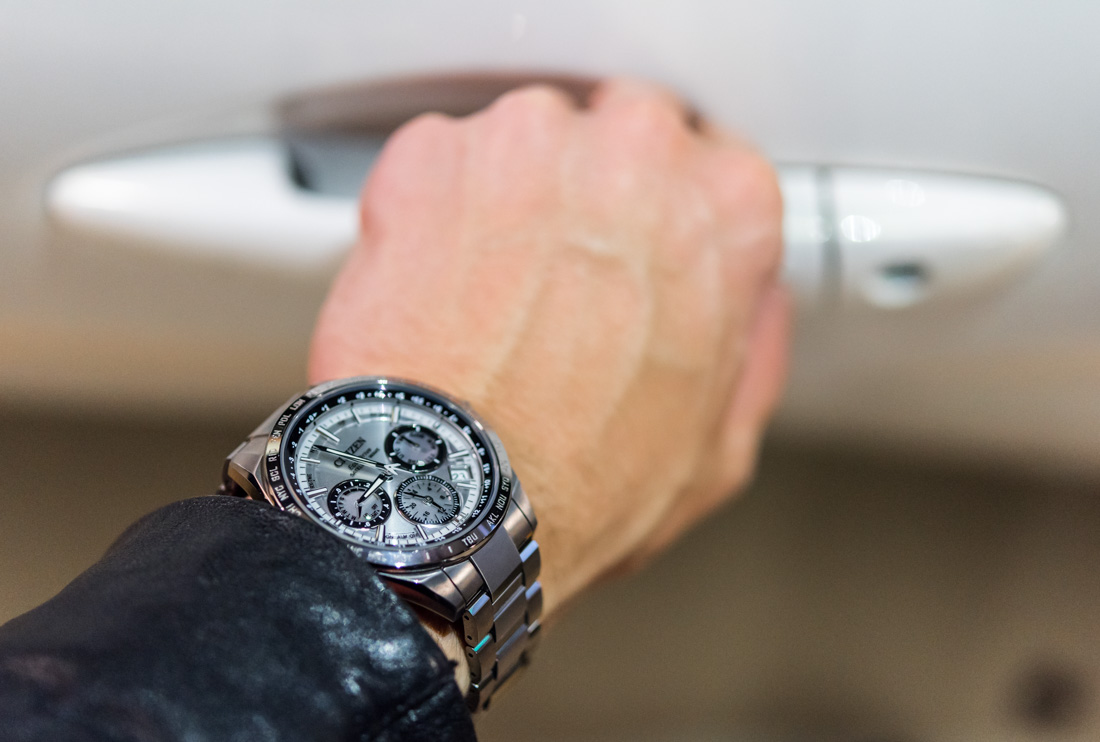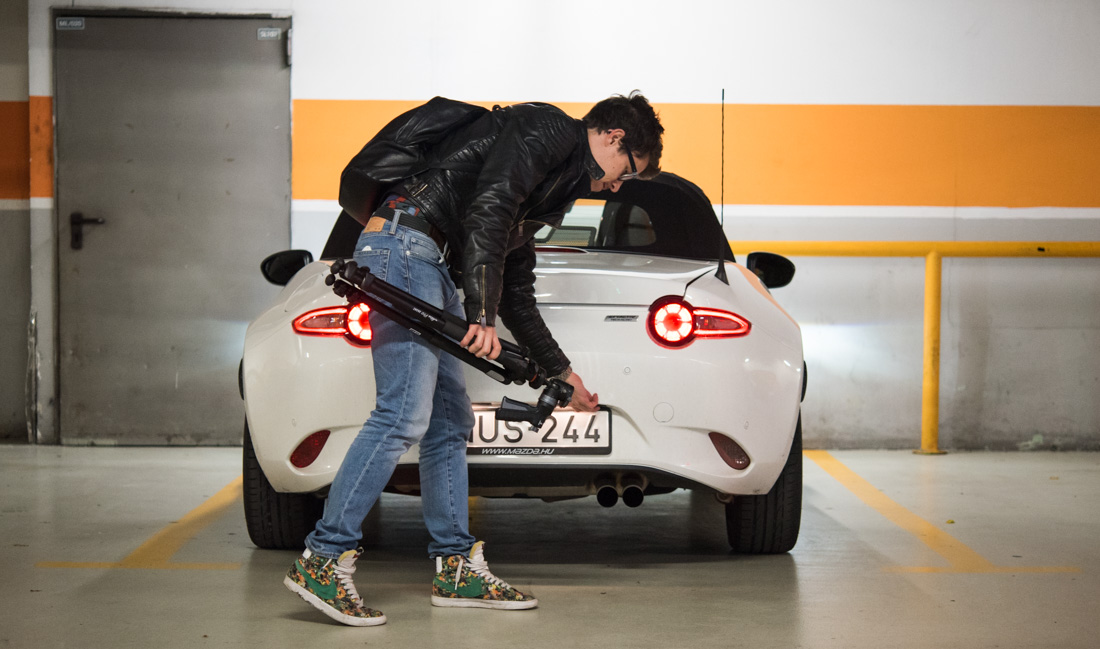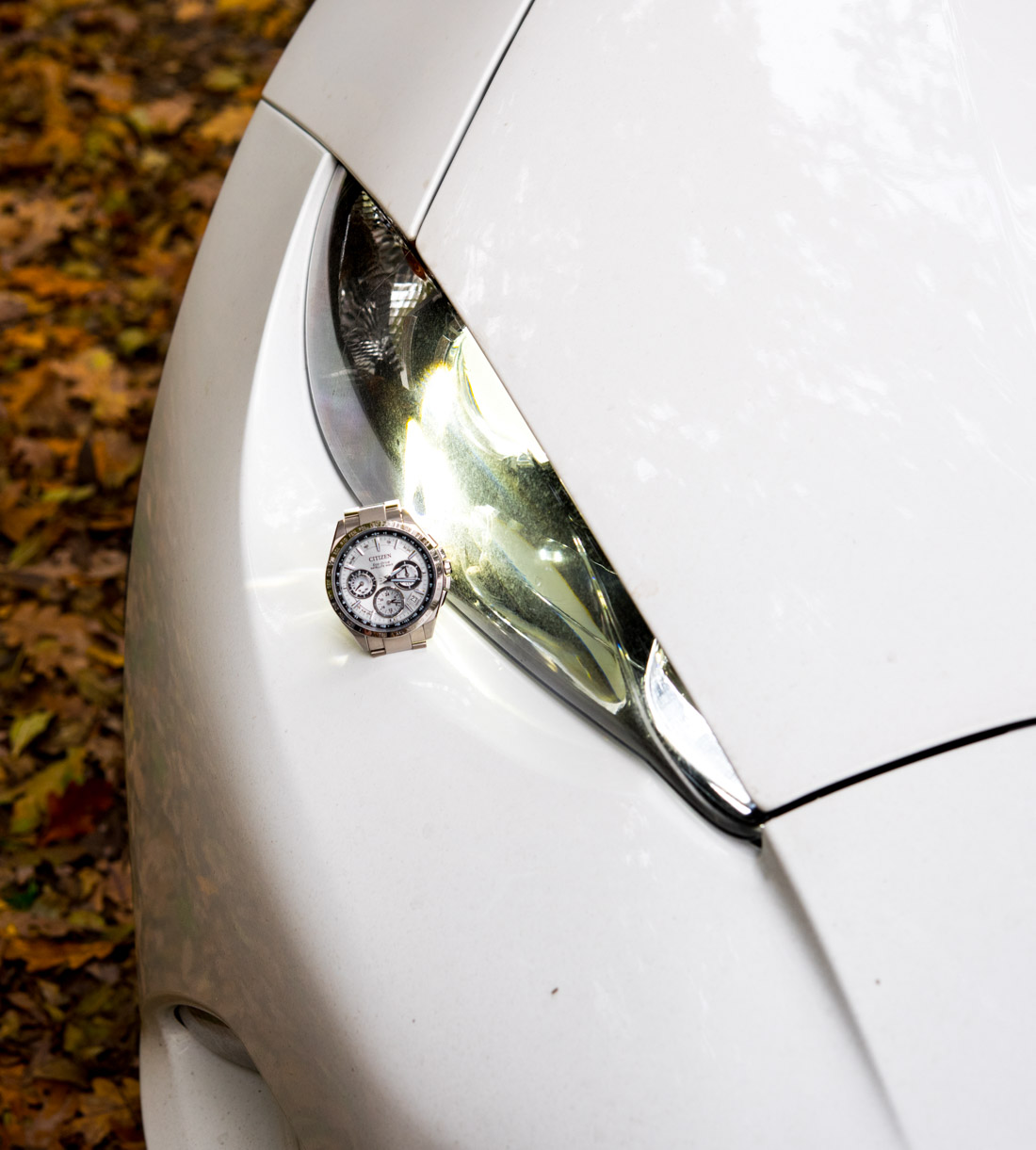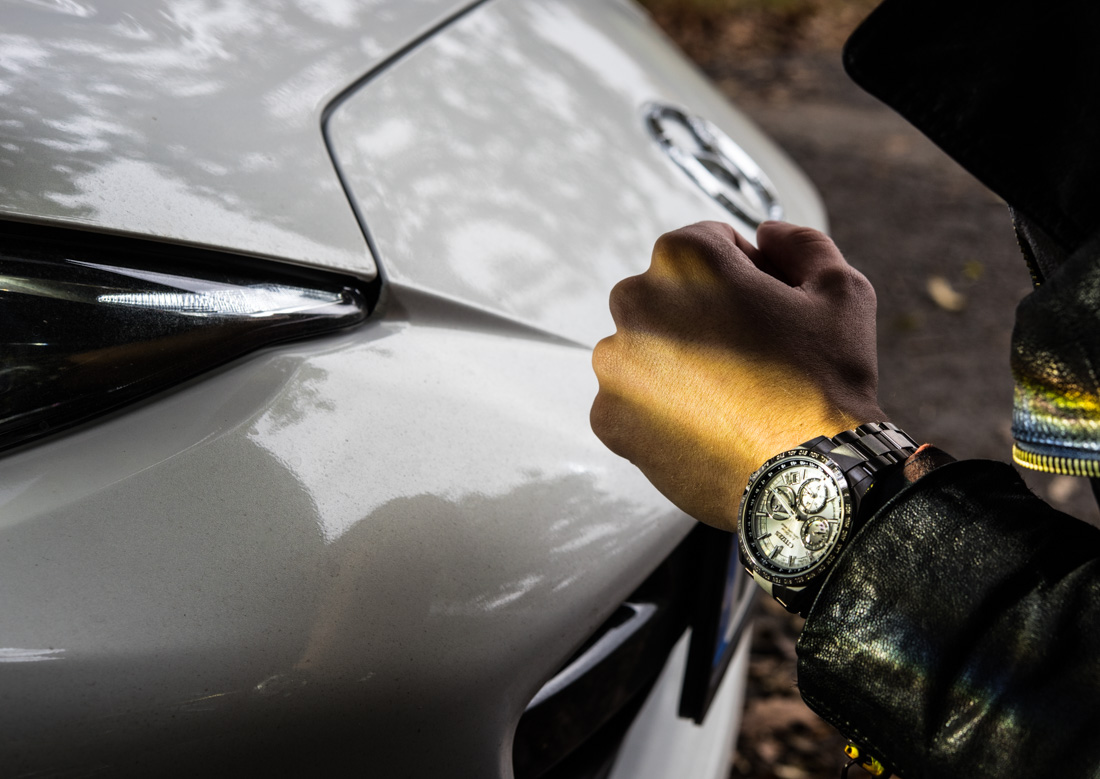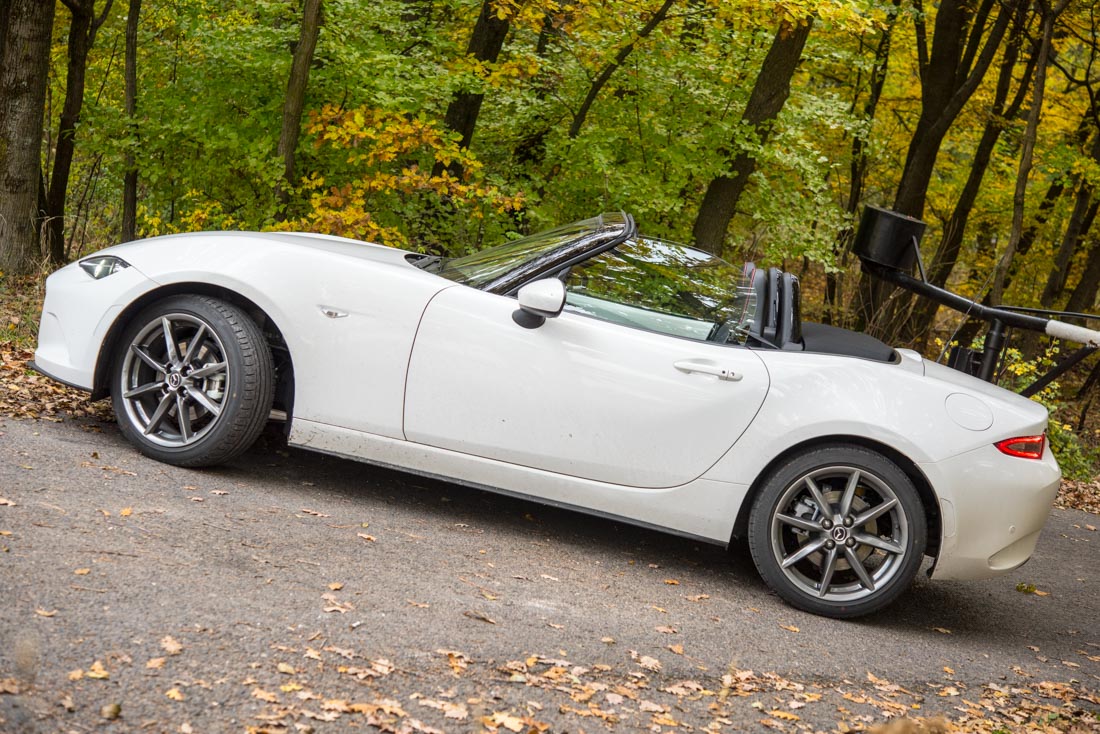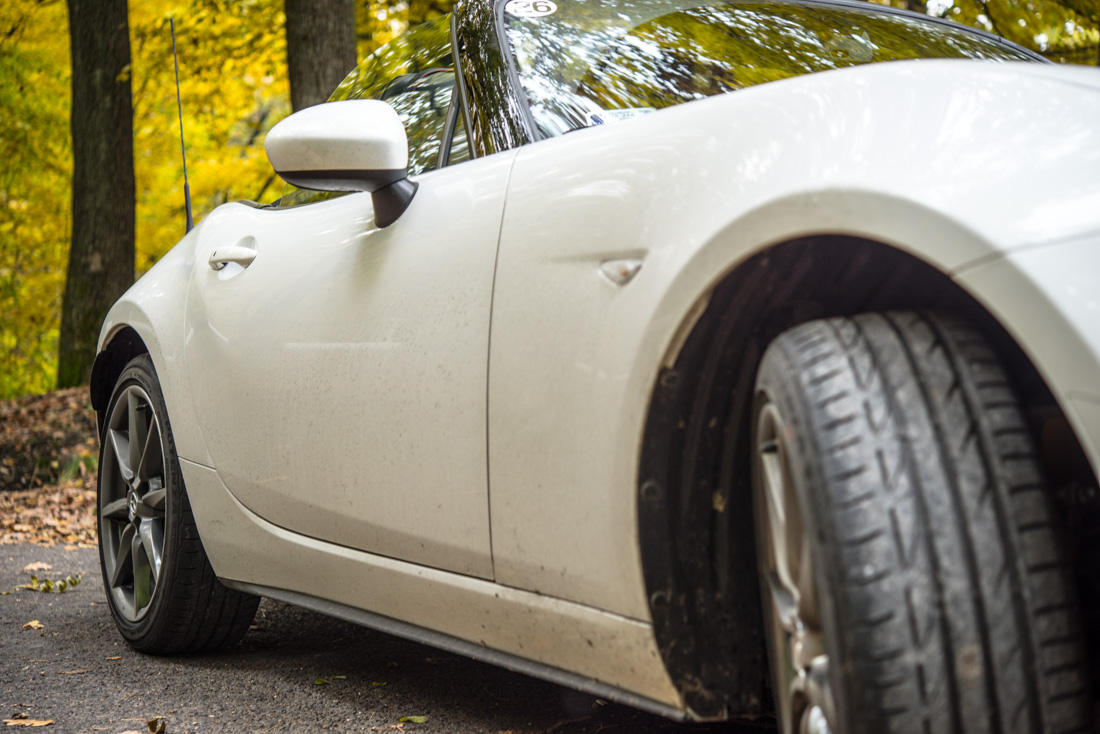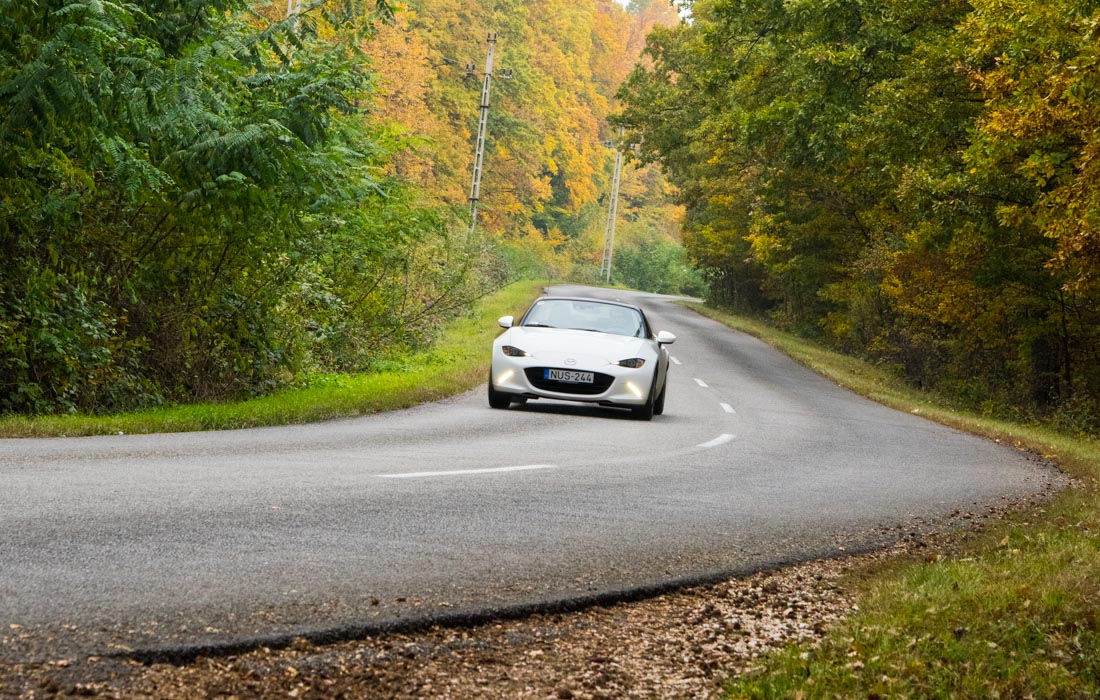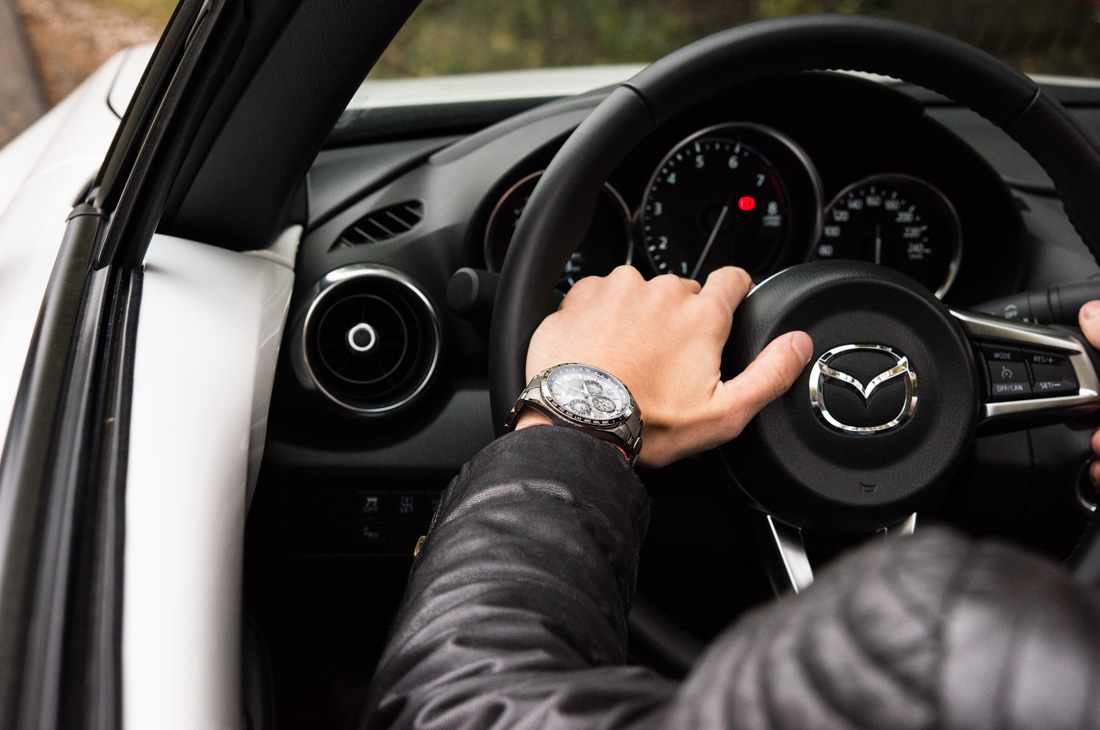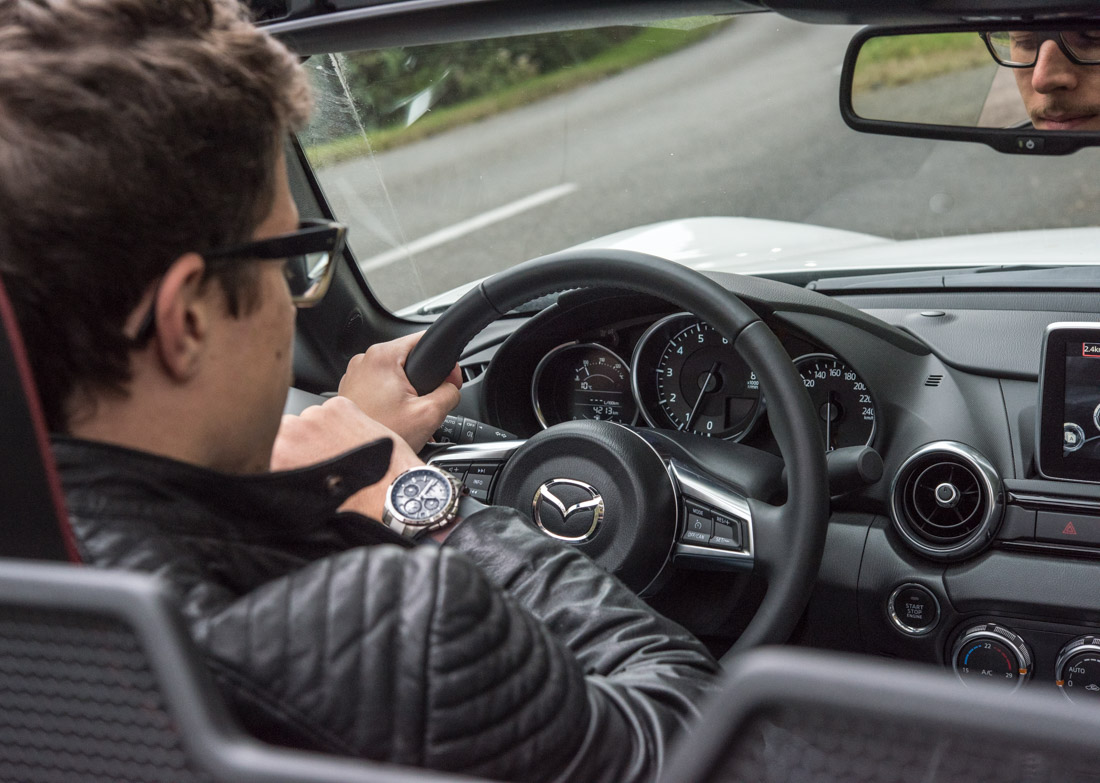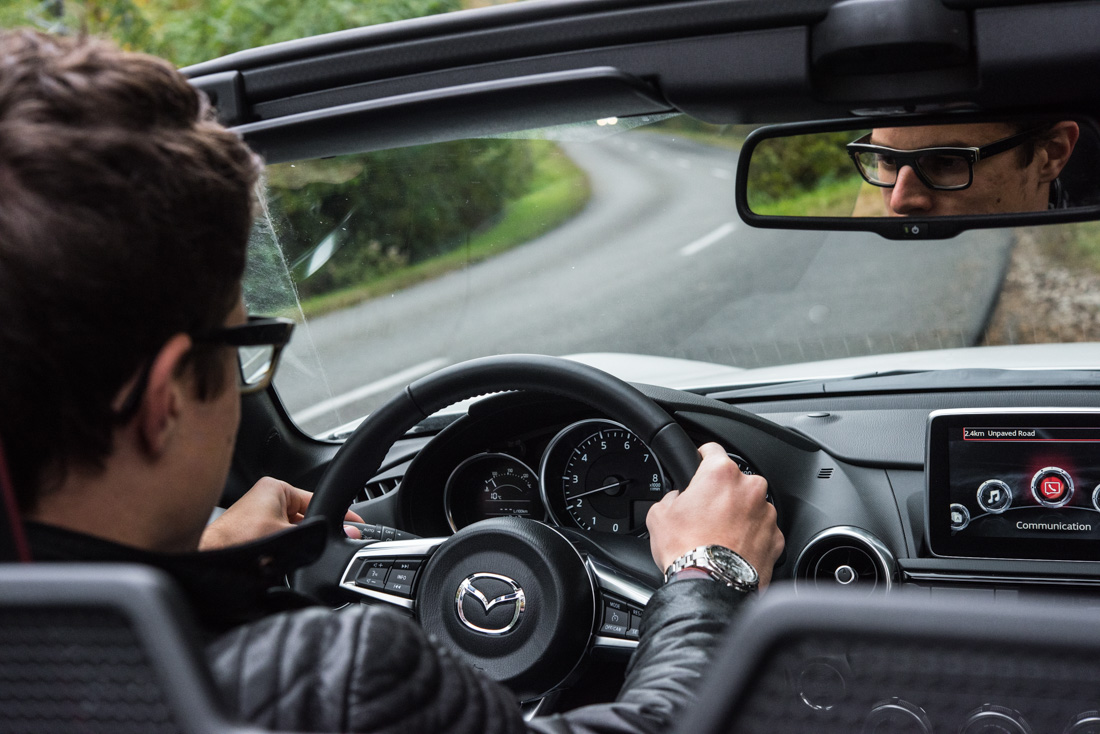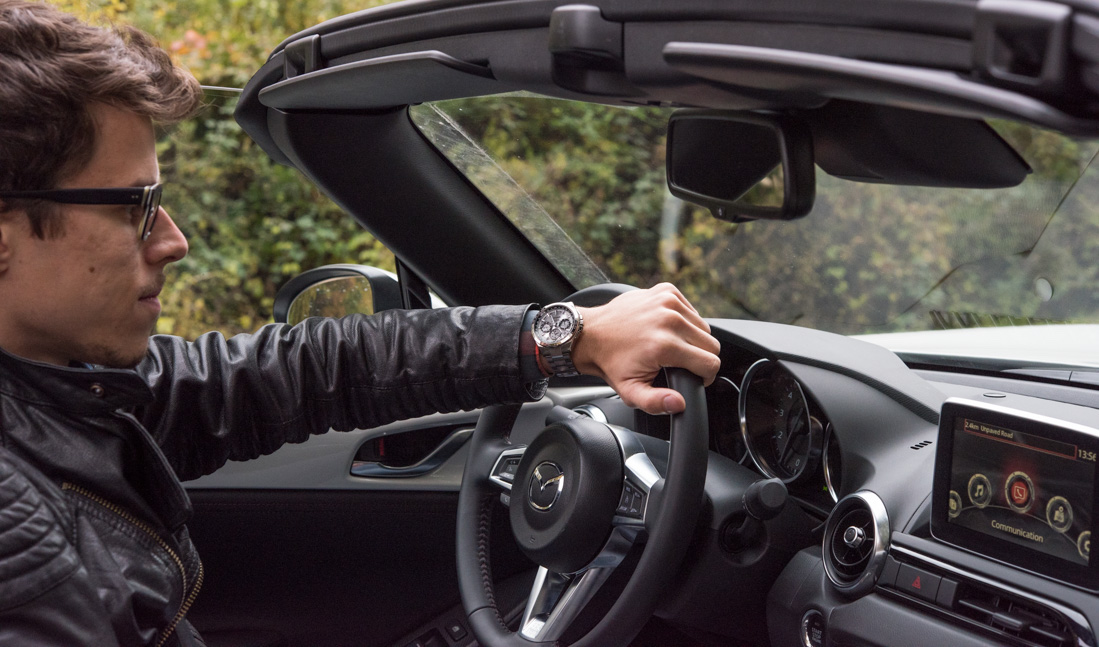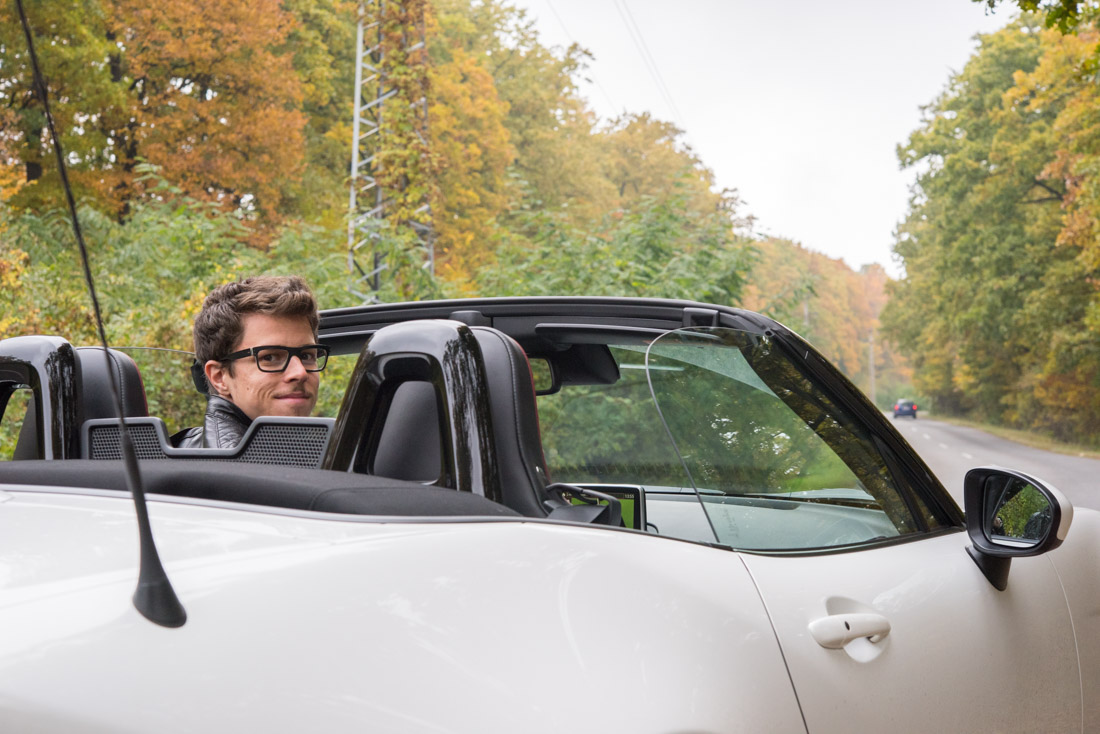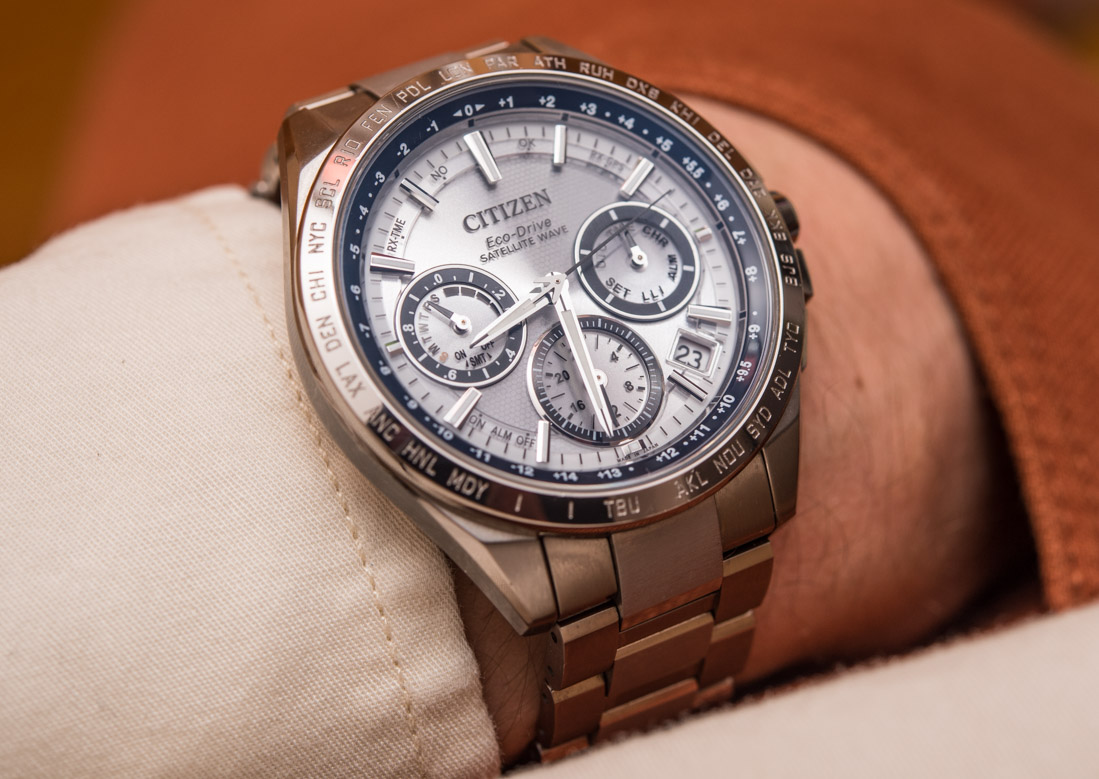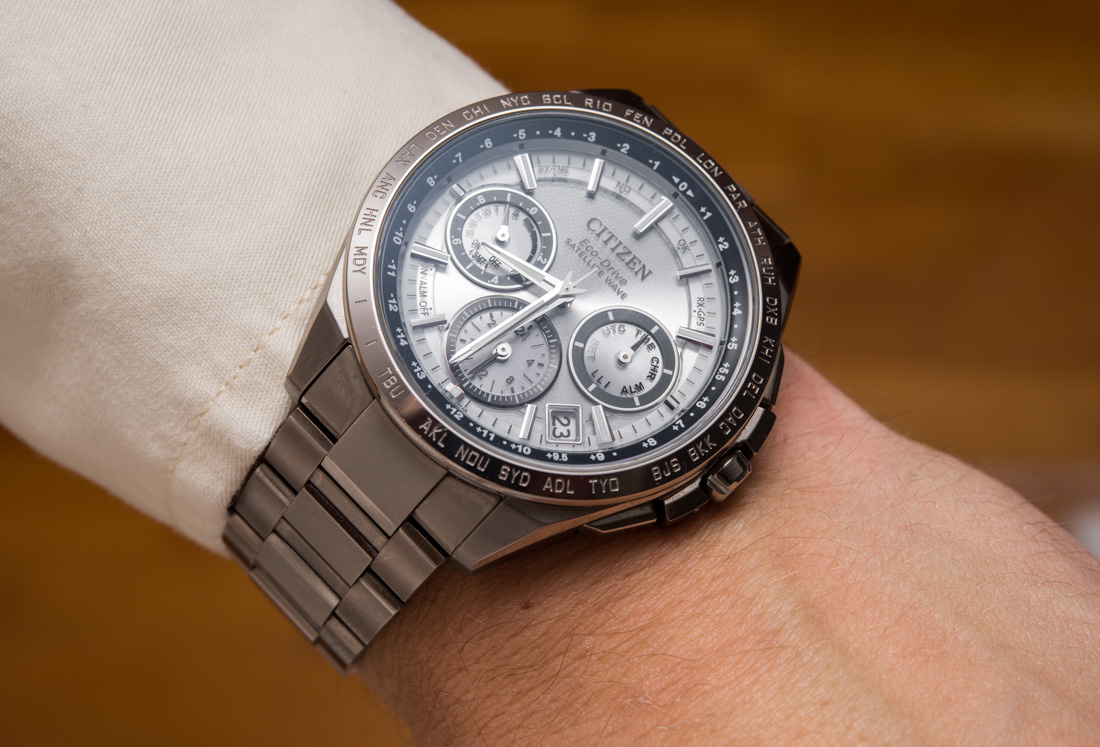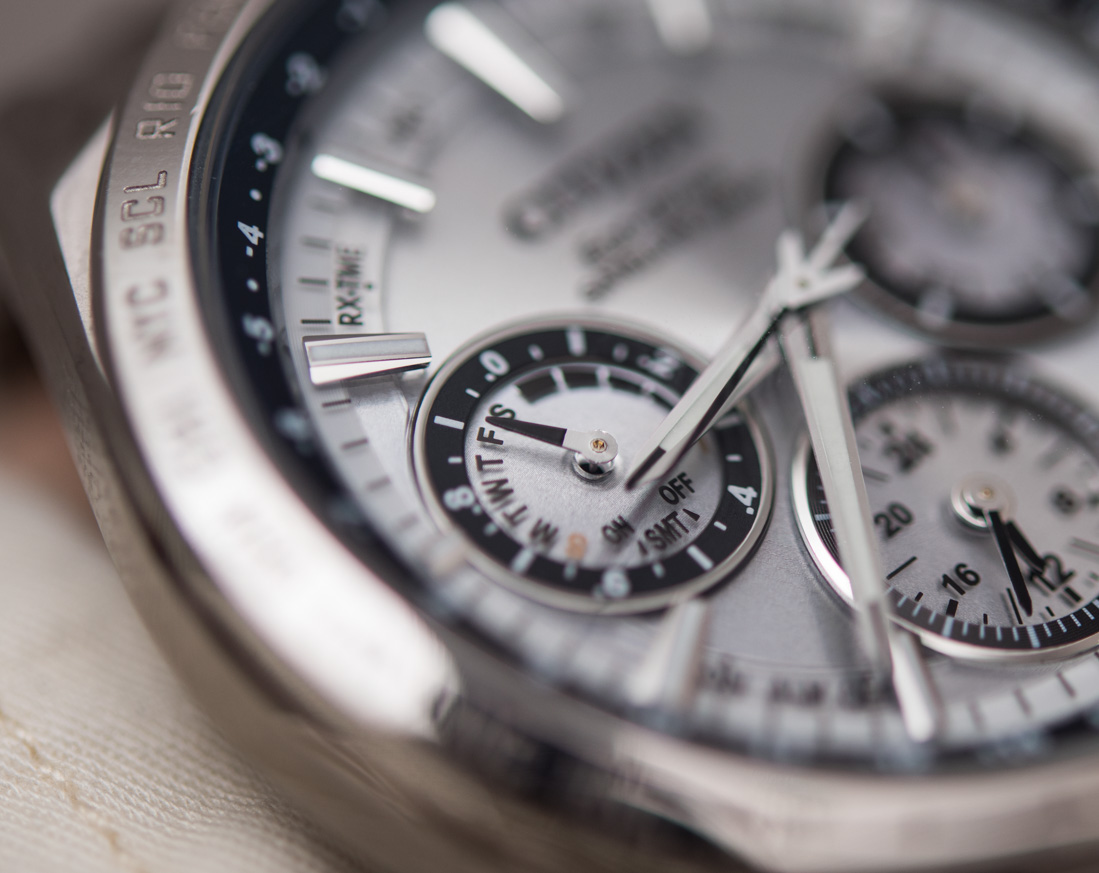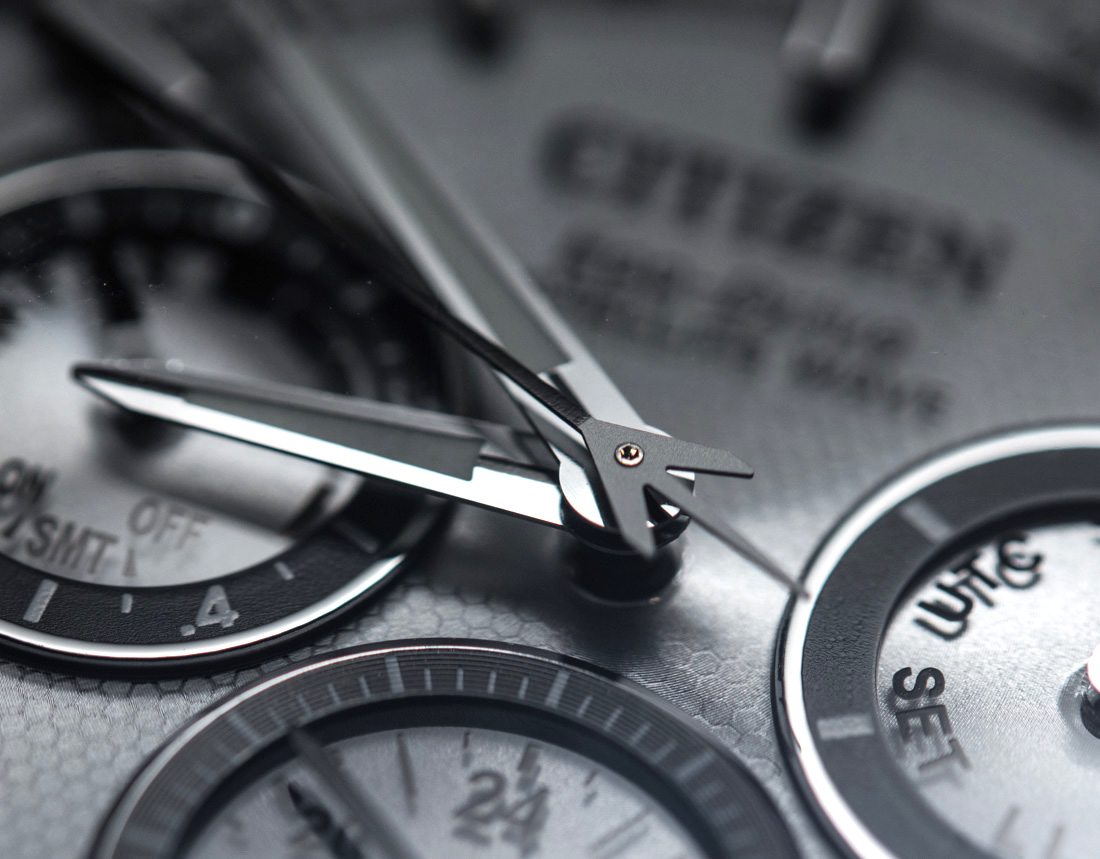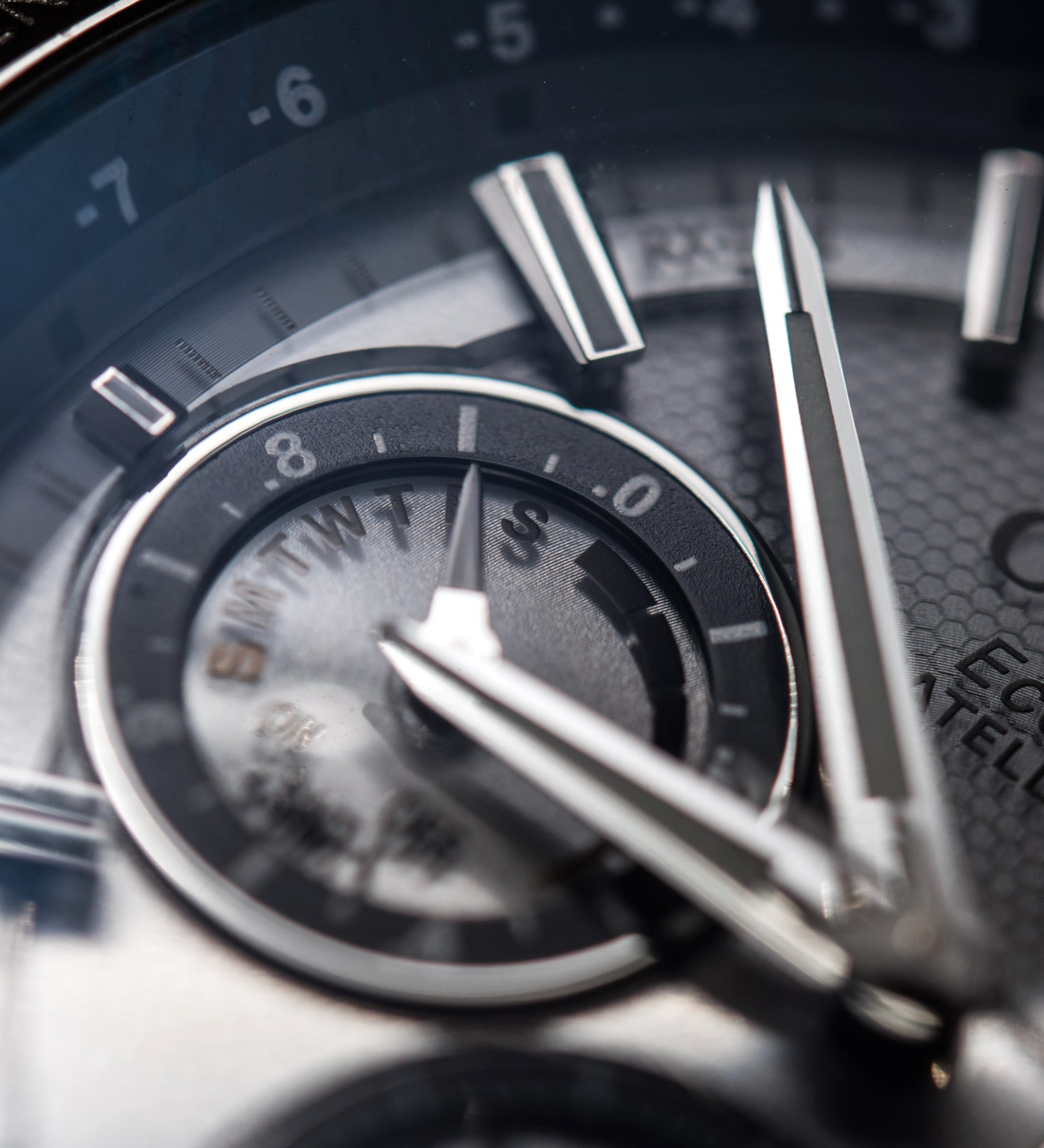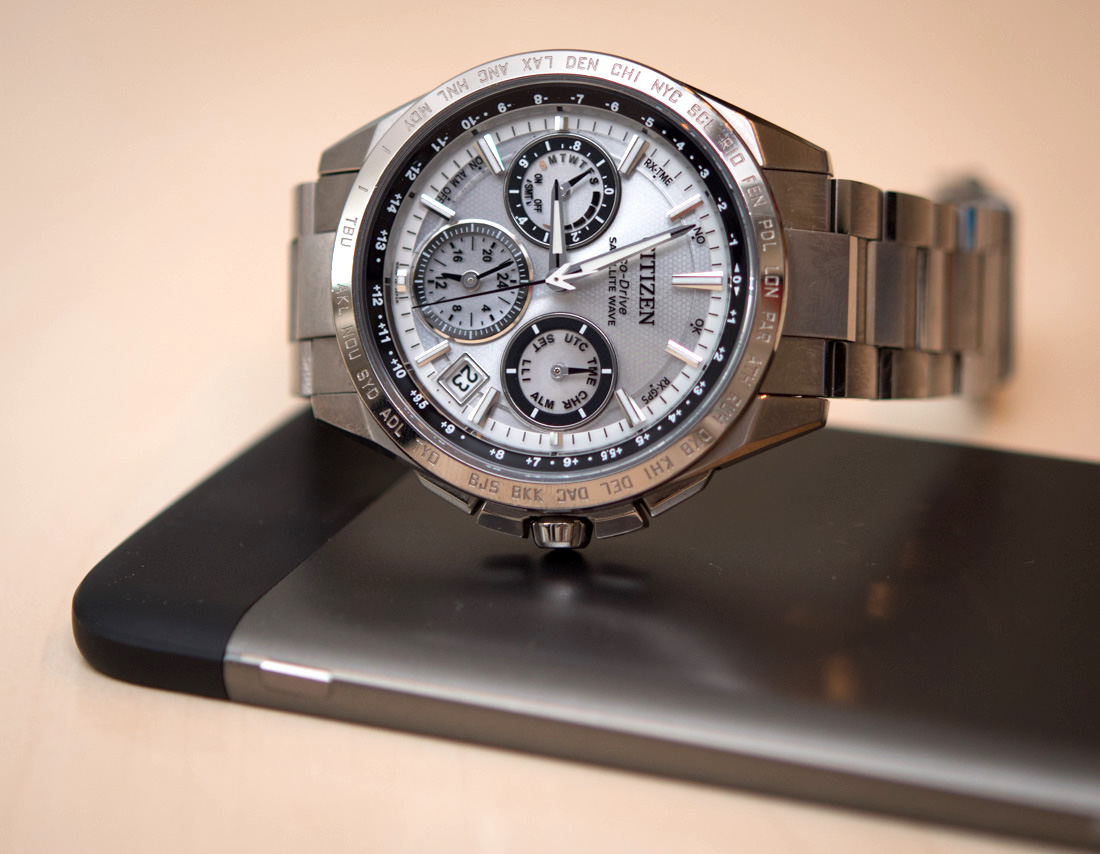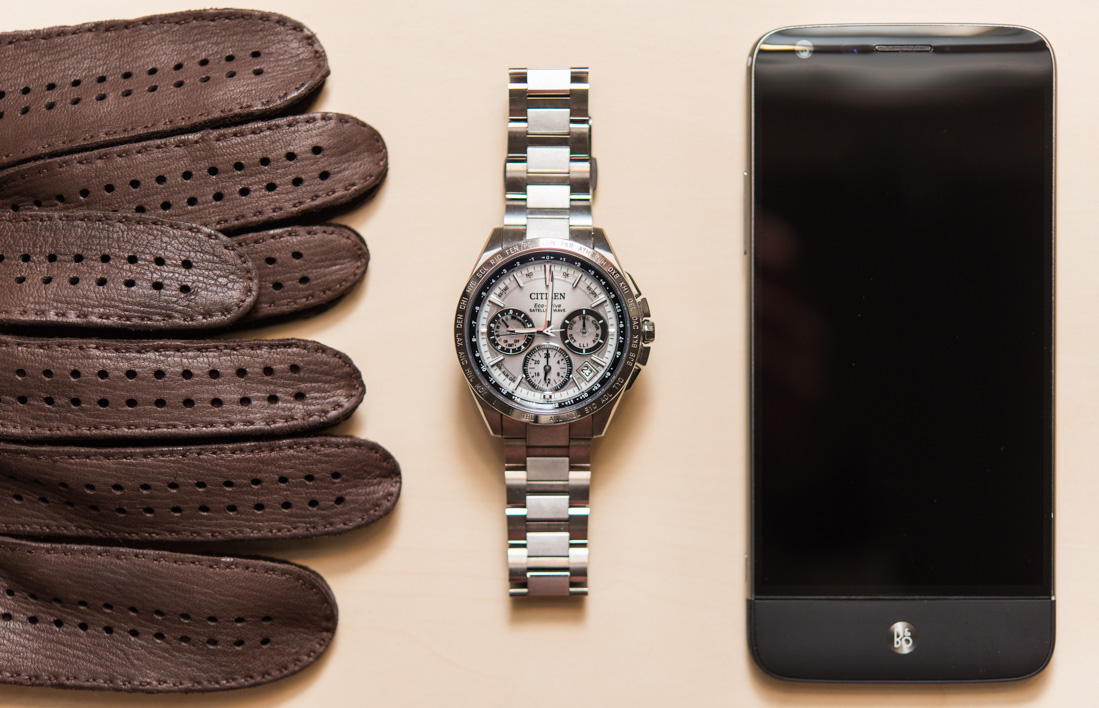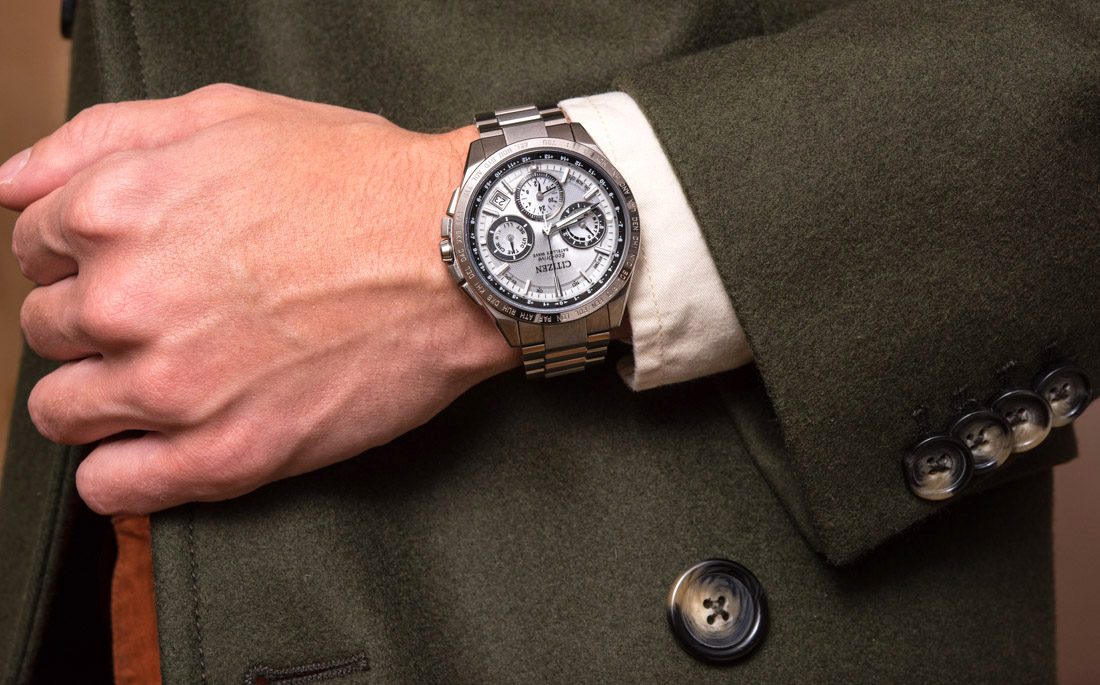
The F900 Wearing Experience
Thus far, we have proved that technical advancements can and do bring us fantastic improvements – as the new ND’s better mileage, lower weight, higher build quality, and more modern equipment testify – but, apparently, they are often not without some serious compromises in other compartments departments. So, how does the Citizen Eco-Drive Satellite Wave F900 perform?
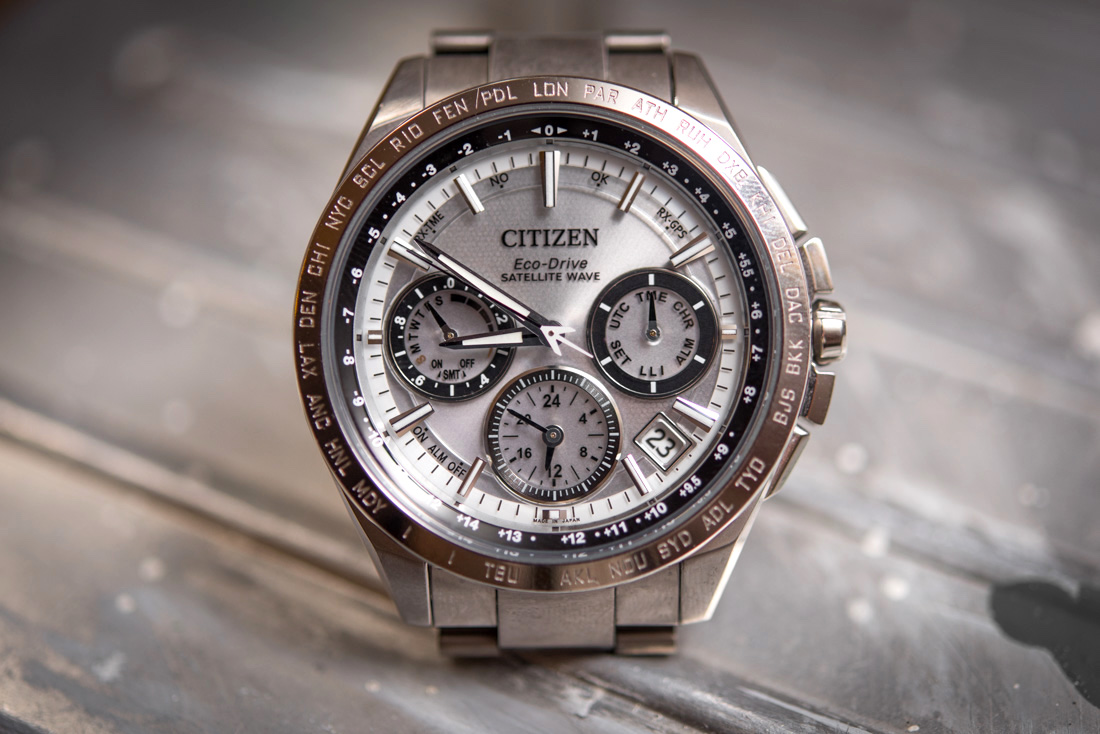
The F900, for short, is among Citizen’s most expensive and most technically sophisticated watches available today – I also believe it to be the thinnest GPS-equipped watch on sale, but let’s not get ahead of ourselves. We have familiarized ourselves with the Mazda MX-5’s secret recipe already, so let us discover just that of the Citizen Eco-Drive Satellite Wave F900. It took but a few days to determine with confidence that I hands-down enjoyed wearing the F900; however, the “recipe’s list of ingredients” took a bit longer to determine.
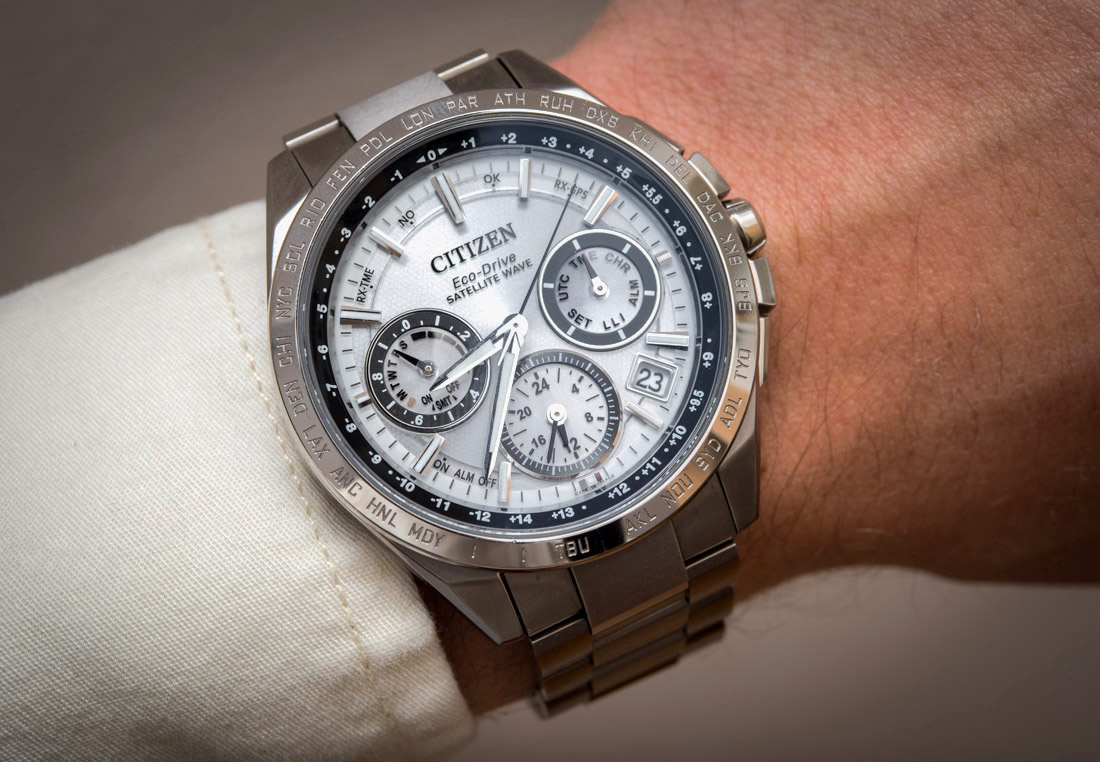
The most important attributes of the Citizen Eco-Drive Satellite Wave F900 turned out to be these two: first, incredibly comfortable wear under any and all conditions and, second, absolute reliability. Over the course of the last several months that I have had the watch around, on a day-to-day basis these two factors have turned the F900 into my Most Worn Watch Of The Year – a coveted award, in all seriousness, considering all the competition that keeps coming in for review. Let me explain.
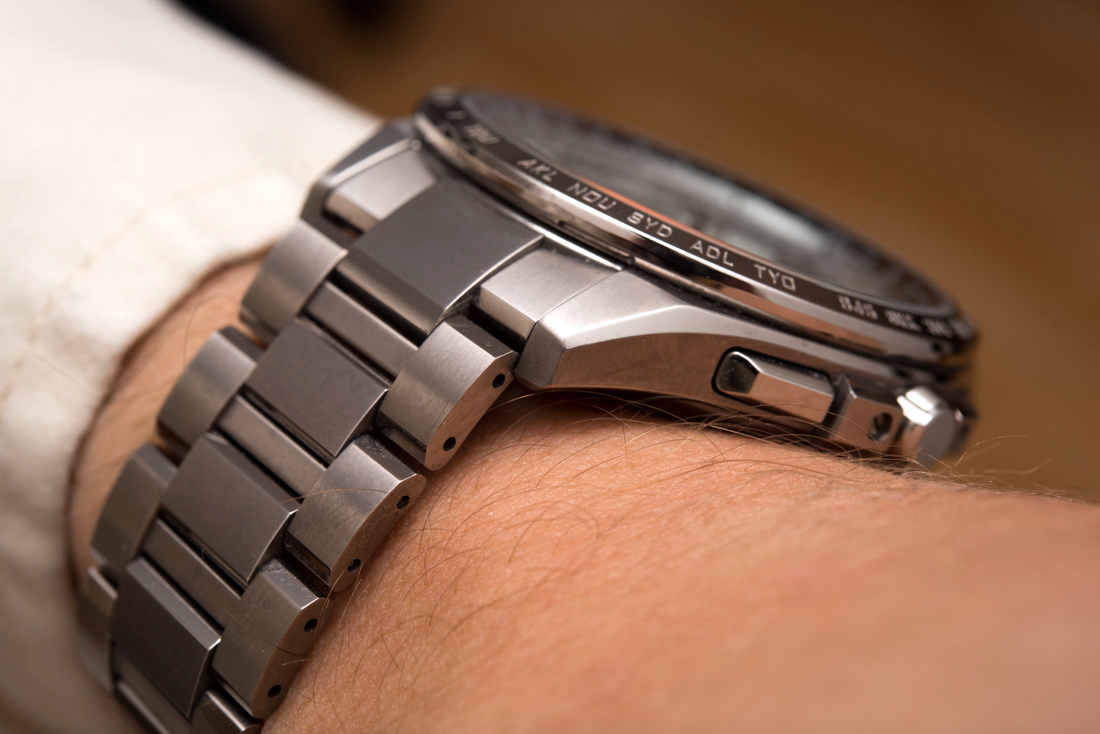
Crafted from Citizen’s “Silver-Tone Super Titanium,” its 44mm case size might imply to you that the F900 is a large and not always comfortable-to-wear watch, but the reality couldn’t be further from that. The titanium case and bracelet are not only genuinely beautifully finished, but also almost too-good-to-be-true light. I will go out on a limb and say that if you wanted to define what a watch should weigh in proportion to its size, how it should wrap around the wrist and how it should feel when worn under a winter drizzle or in the summer heat, the Citizen Eco-Drive Satellite Wave F900 would be the perfect specimen.
The case both feels and looks thinner than most mechanical chronographs while the bracelet goes on to prove that the lighter and smaller the links and the easier they can move around, the better the wearing experience will be.
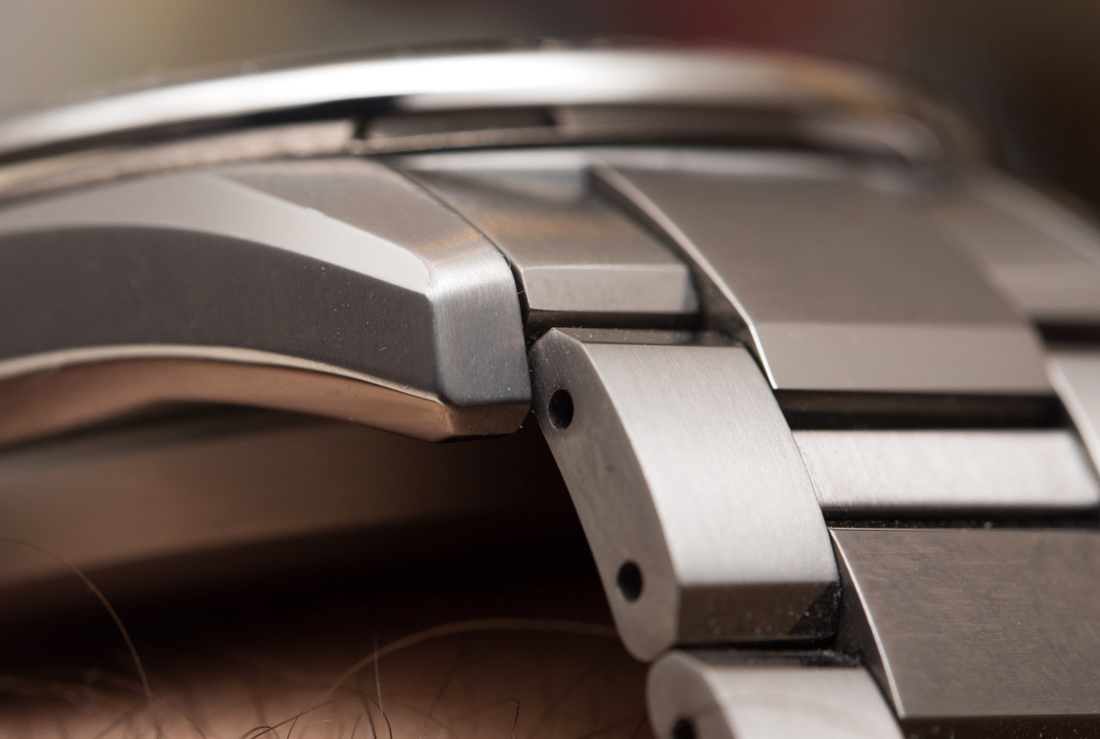
Titanium is notoriously soft – and those who know me and my hectic lifestyle that includes a lot of traveling (which I consider to be an expedited durability test for watches) know I do ask a lot from the watches I get when I expect them to not only survive but remain in good quality after everything I inadvertently put them through. Once again, the F900 proves that what appears to be impossible for so many is actually perfectly attainable: the polished titanium bezel shows minimal wear (steel/aluminum insert or gold bezels develop countless hairline scratches in no time), the also polished upper edge of the case profiles and lugs show not even the smallest of dings or scratches, and it is only the titanium clasp that, after some 8 months of intermittent, but often heavy daily wear, shows some scratches. Super Titanium, hence, scores a solid 10 out of 10 for durability and aesthetics, in my book.
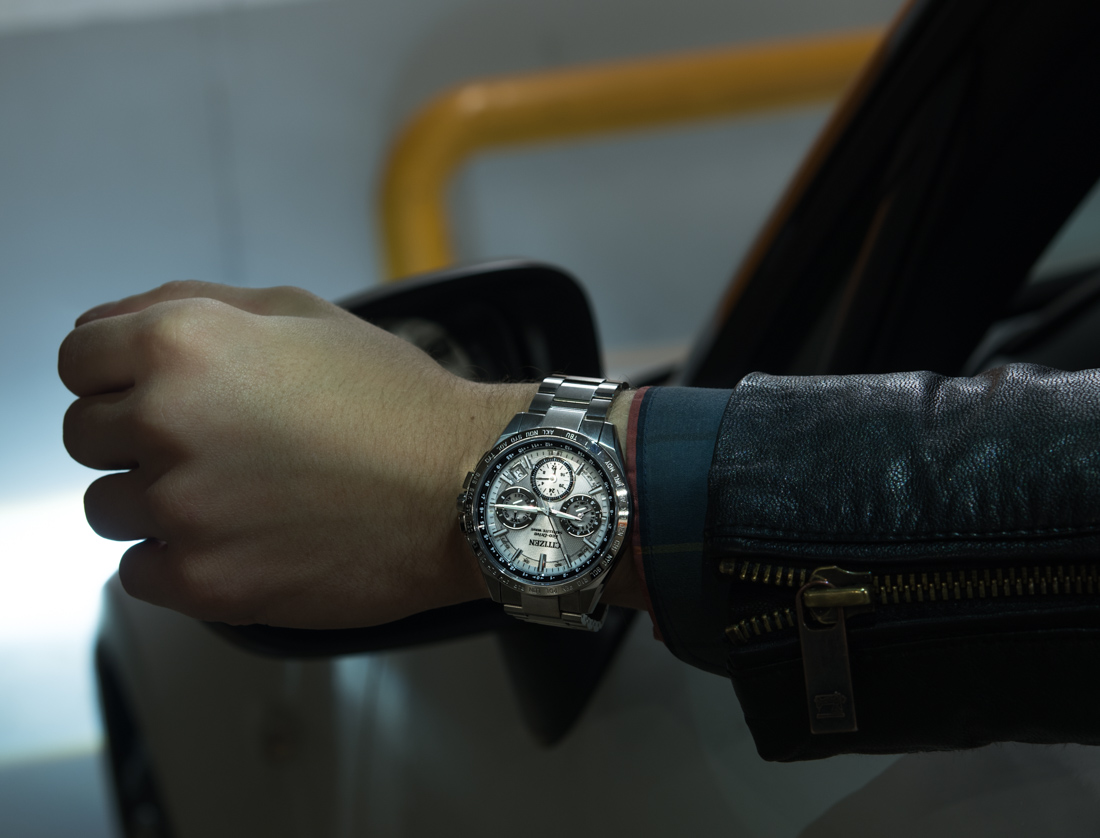
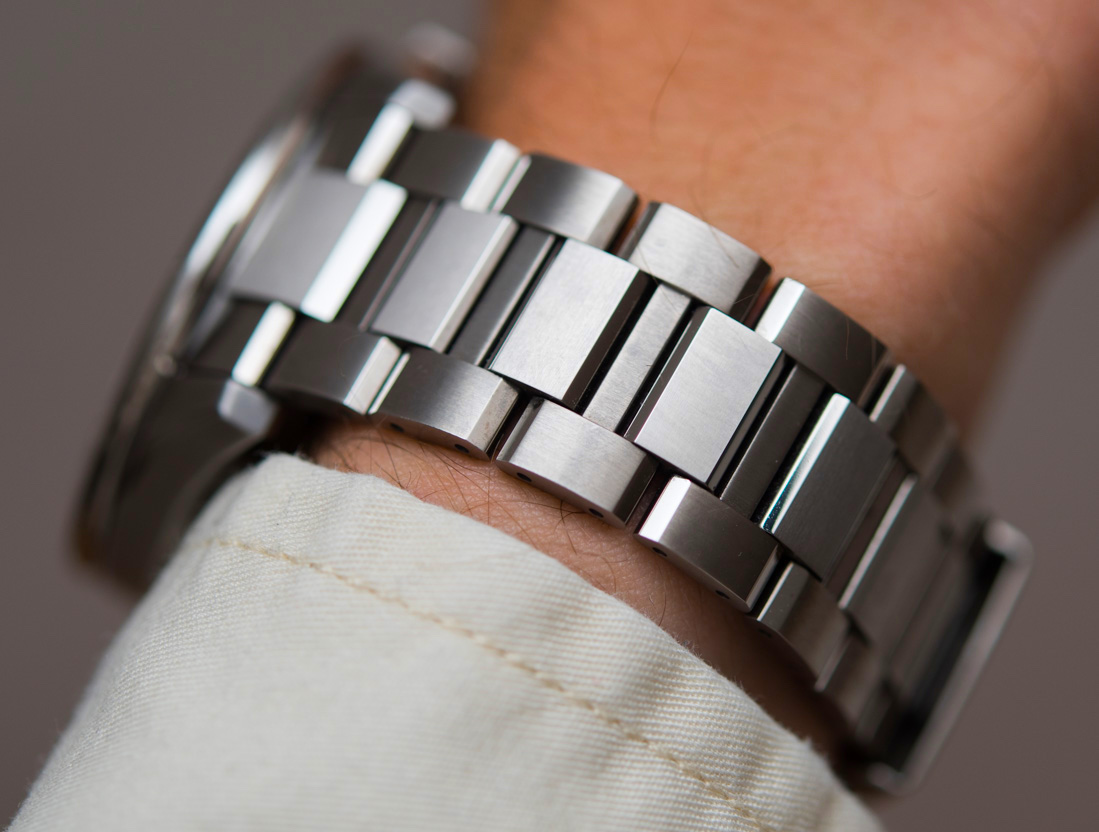
I wanted to explain the exceptional durability of the case and bracelet not only because it deserves all the praise it received, but also because it tremendously enhances the “daily wearer” status and my confidence in the watch when I reach for it time and again, picking it up to wear that day, even when there are more exclusive, and/or rare, and/or expensive options often available.
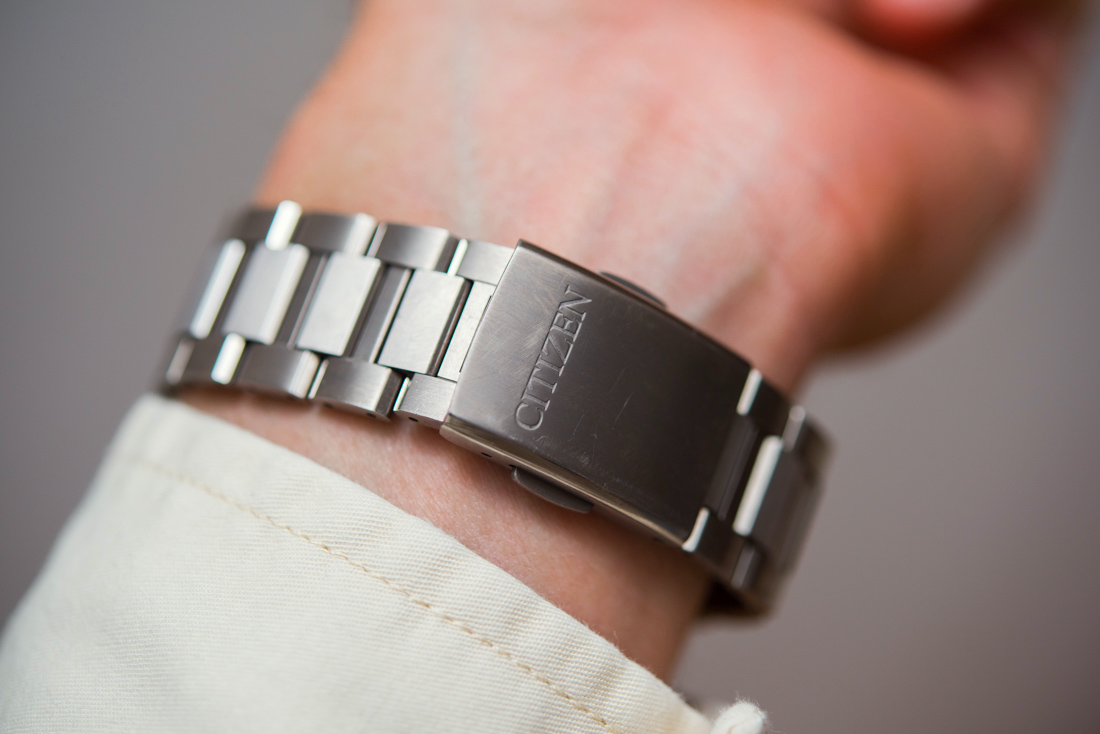
One last, but important note regarding the bracelet itself: its titanium clasp has been fitted with what I found to be the most easy to use, thinnest, and most practical micro-adjust I have encountered on any watch. Forget the bulky clasps, the ridiculous-looking extensions, or even the inconvenience of having to take your watch off to adjust the bracelet. This small clasp (about 40% shorter and considerably thinner than most) contains a clever lock mechanism that you can operate with nothing else but the two pushers you normally use to unlock the clasp.
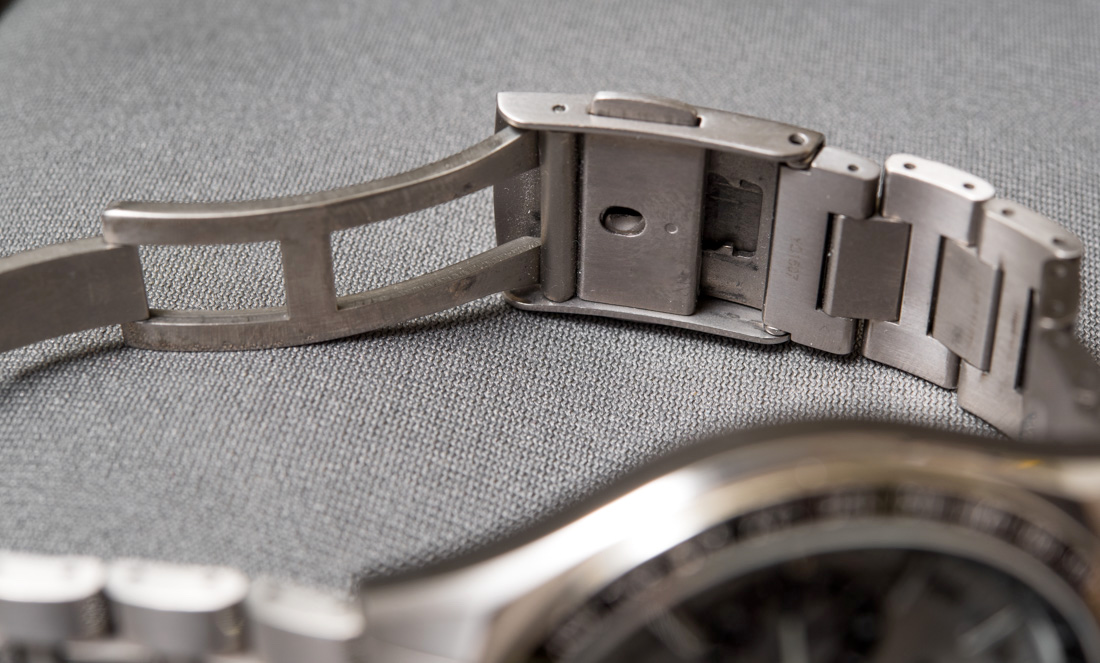
The ingenious component in this is a thin sheet of metal that is joined to the last link at one end, and to the clasp’s lock at the other. By pressing the buttons, the notches of this metal sheet disengage, allowing for it (and with it the full half of the bracelet) to move back and forth. The extent of the movement is relatively short, but it is just enough to flawlessly accommodate for the extent to which my wrist’s diameter changes depending on the heat and humidity. Also, because the micro-adjust system is linked to the pushers, you need not fiddle with it, just put the watch on, keep pressing the pushers and allow the bracelet to slide out or help it slide in to enable for the perfect fit. Did this feature debut on the F900? Probably no, but it is where I first recall encountering it and, regardless, whoever came up with this micro-adjust deserves a promotion.
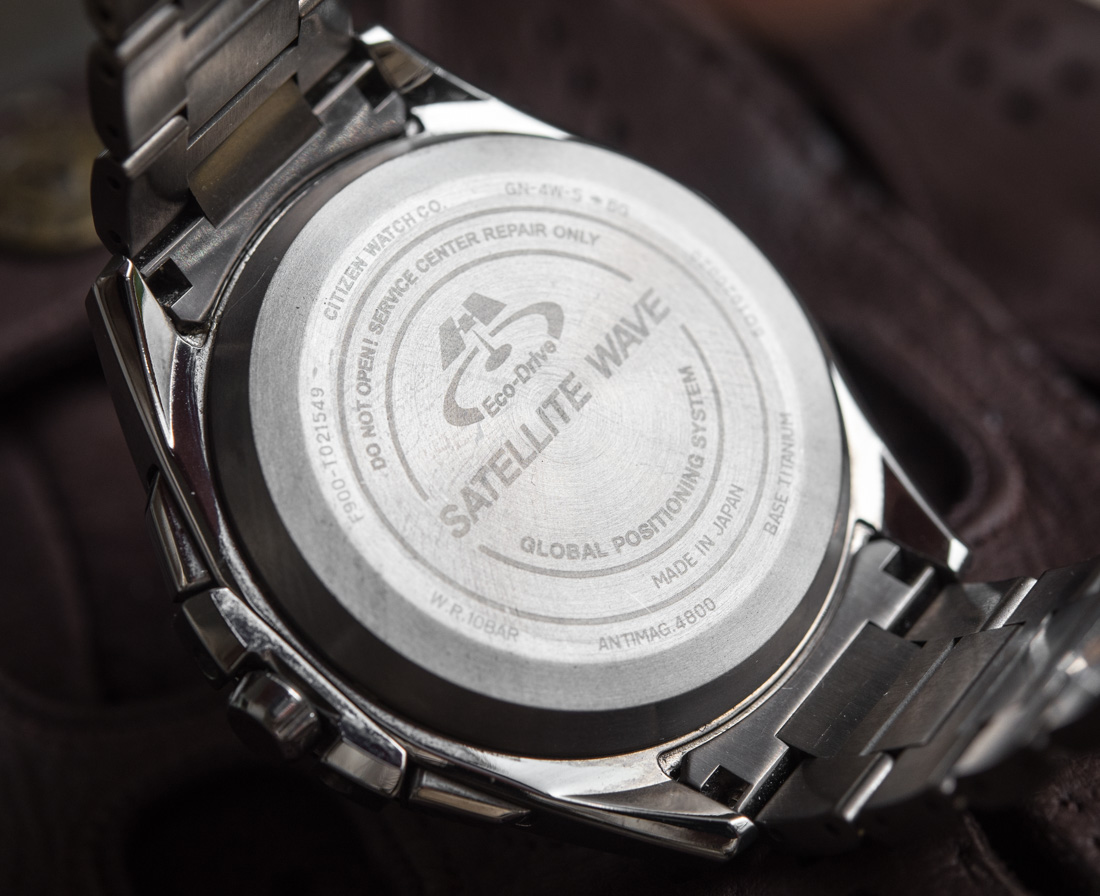
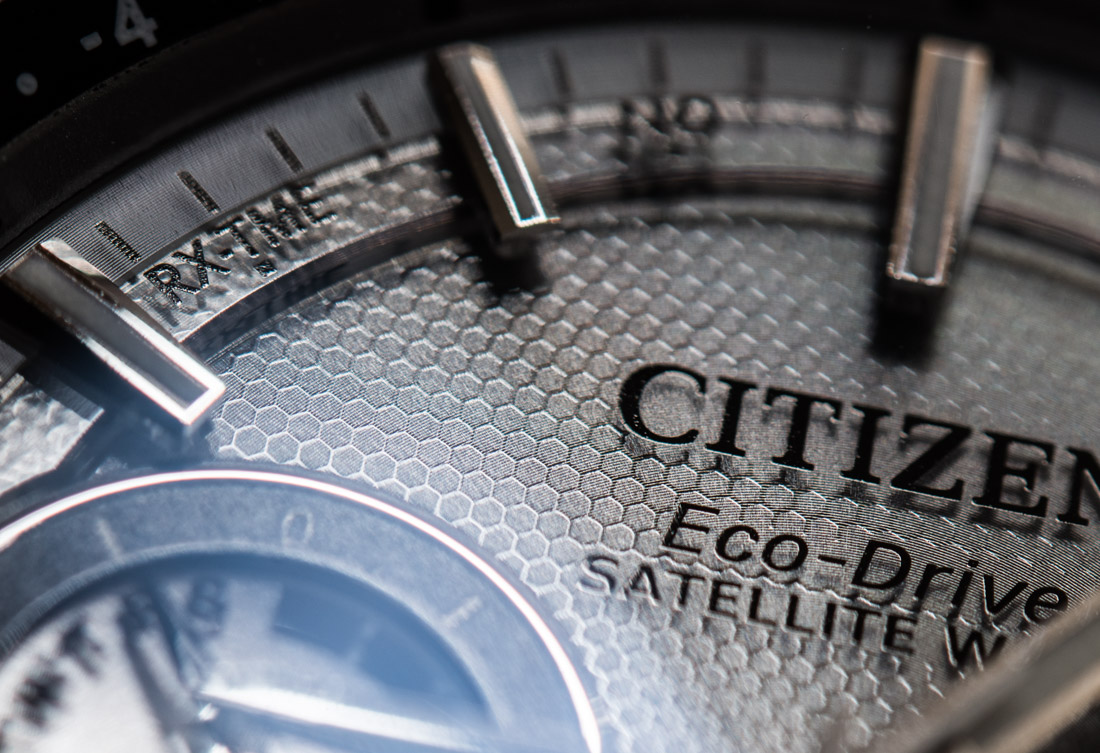
The feature set of the Eco-Drive F900 movement, as Citizen efficiently call it, further enhances that sense of dependability and reliability. The Eco-Drive function allows the movement to be charged by any light source – there even is an “LLI” or Light Level Indicator mode that uses the center seconds hand to indicate how strong the momentary charge received from any source of light is. Sure, you need not drop this much money on a solar charged quartz watch, so let’s dig deeper into the sleek, wrist-worn toolbox that the F900 is.
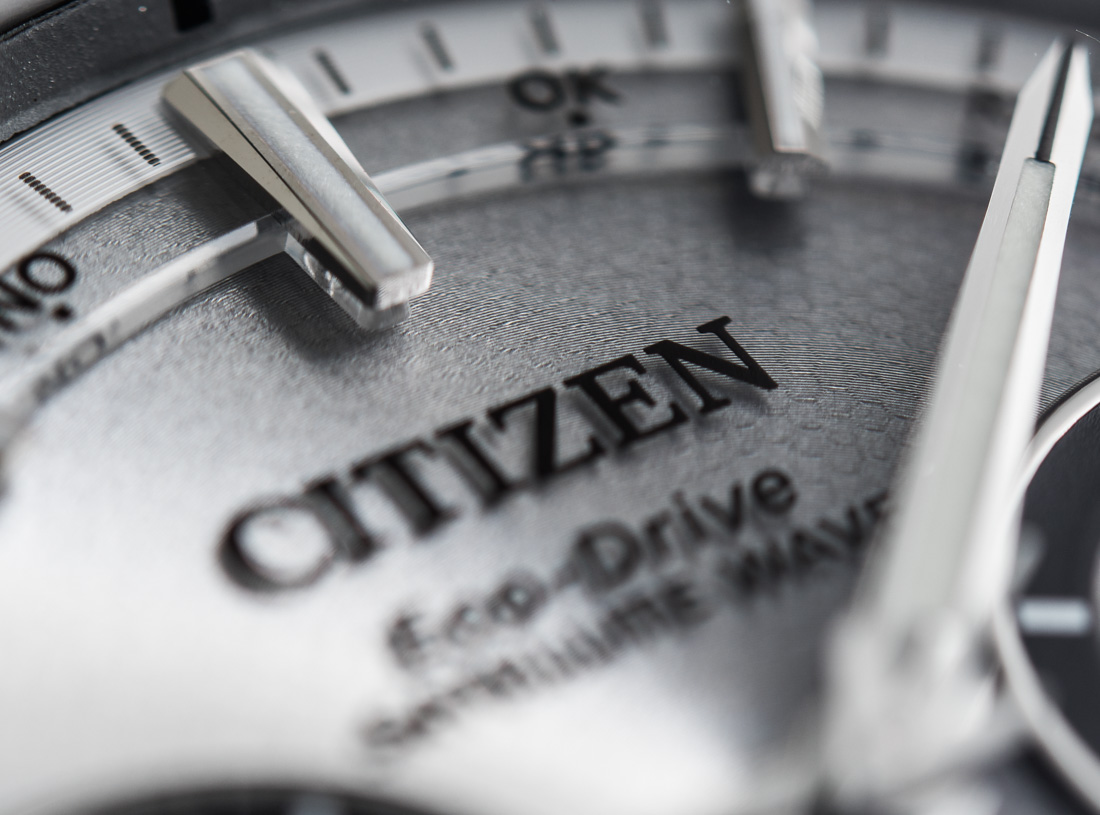
Satellite Wave, as you guessed, I’m sure, refers to the GPS reception technology of Citizen. Press and hold for a few seconds the upper pusher at 2 o’clock and, given you are outdoors or, in my experience, in a moving car, the watch within 30 seconds will locate where on Earth you are and automatically set the received atomic time signal to your location. Press and hold for a few seconds the lower pusher at 4 o’clock and you’ll enter Atomic Radio Signal Reception mode. In this case, the watch requires only about 3 seconds (based on my own tests, I presume this may vary slightly depending on your location) to receive the official atomic time signal and set itself to it with to-the-second accuracy.
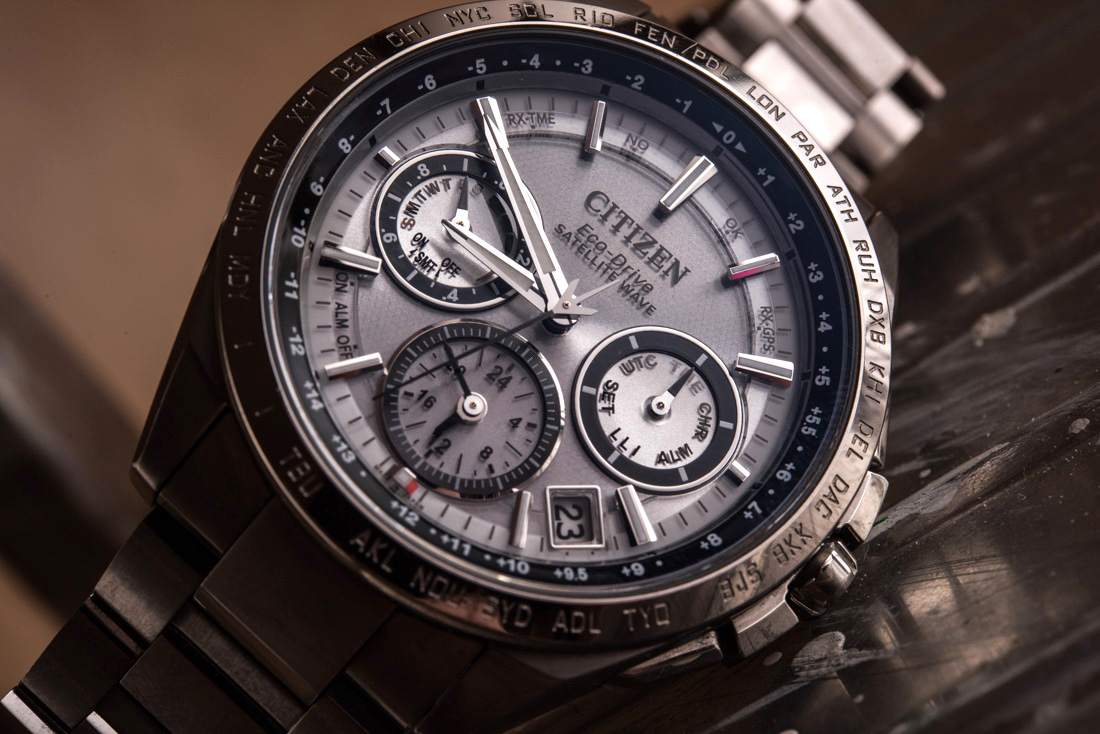
There is something eery and (nerd-alert) cool about being able to know The Exact Time, wherever you are. I, to this day, use the Radio Signal reception function just for the heck of it, even if the F900 movement would on average be off by a mere couple of seconds every month without any external reference time.
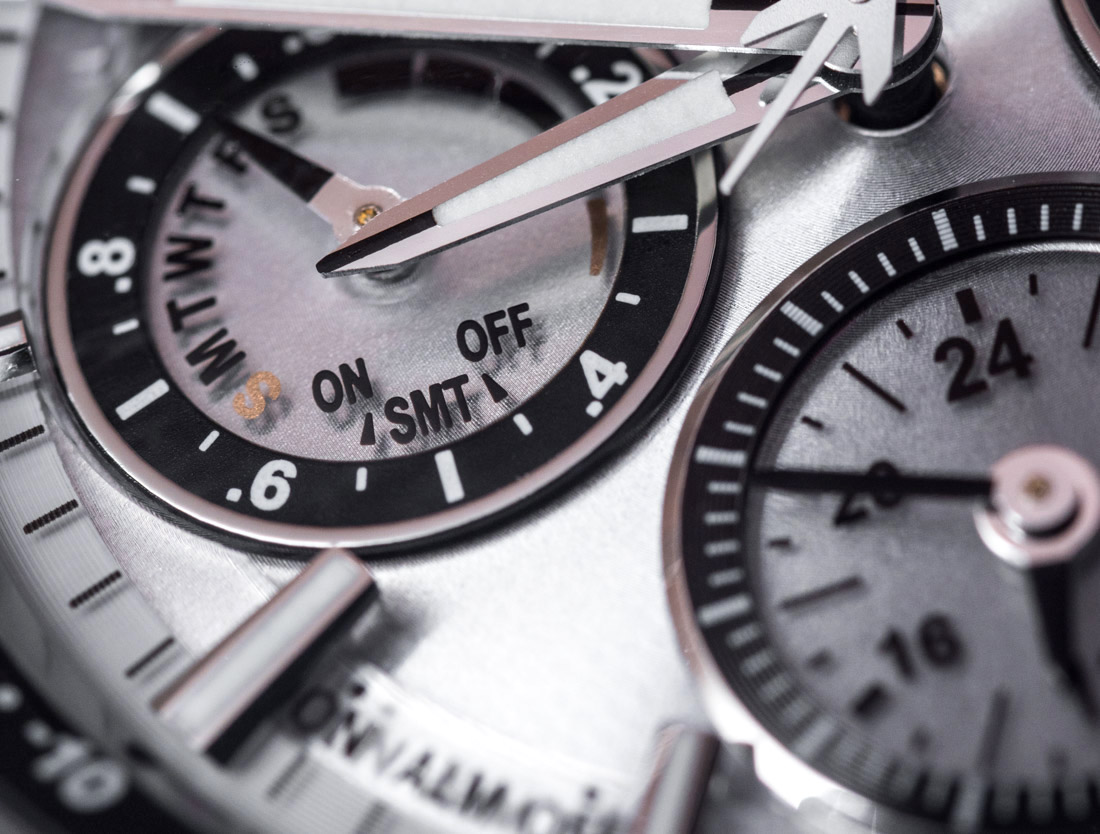
Other features include a 24-hour, 1/10th-of-a-second chronograph, a 24-hour world time display, an alarm, full perpetual calendar with a separate motor driving the date disc, as well as power reserve and light source intensity indicators. Better still, they are all quite easy to use, thanks to the 3 o’clock sub-dial being fully dedicated to nothing else but indicating the presently used function of the movement.
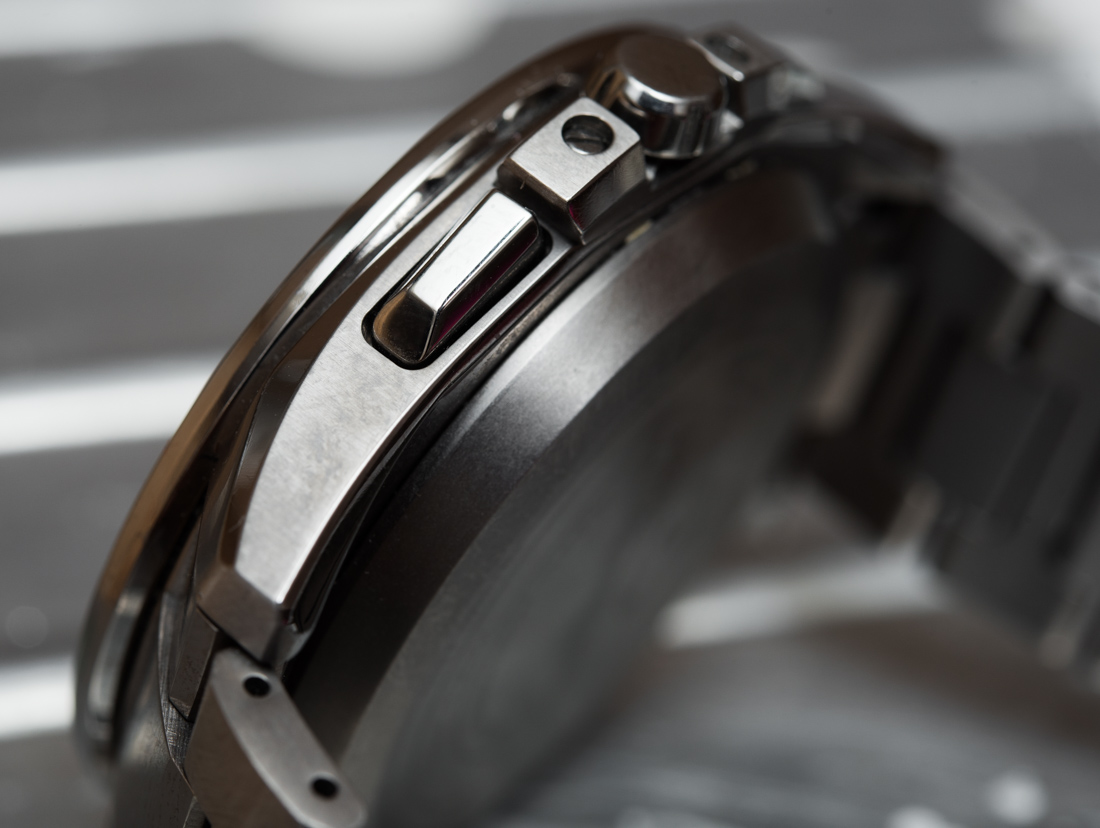
A weird experience was when I got the watch, I eagerly pulled out the crown to its first and then second positions, and found that neither allowed me to set the time. The watch was already running accurate to the minute but was set to a different time zone, and I also had to set the world time indicator (at 6 o’clock, which doubles as the 24-hour chronograph when setting to that mode). To change the hours on the main dial, I had to switch to Time mode, pull the crown to its first setting, and pick a city (timezone) with the seconds hand pointing to them on the periphery of the dial. Then, I had to find out that swapping the main display and the one at 6 o’clock is how you can adjust the latter (by basically moving it up to the main dial and then swapping it back). Sounds tiresome, but the efficient, separate motors to these indicators move the hands swiftly – and setting each time display like this was actually easier than it is on most other quartz watches, and also a lot of the mechanicals, not to mention the peace of mind that comes with knowing that they both are absolutely accurate.
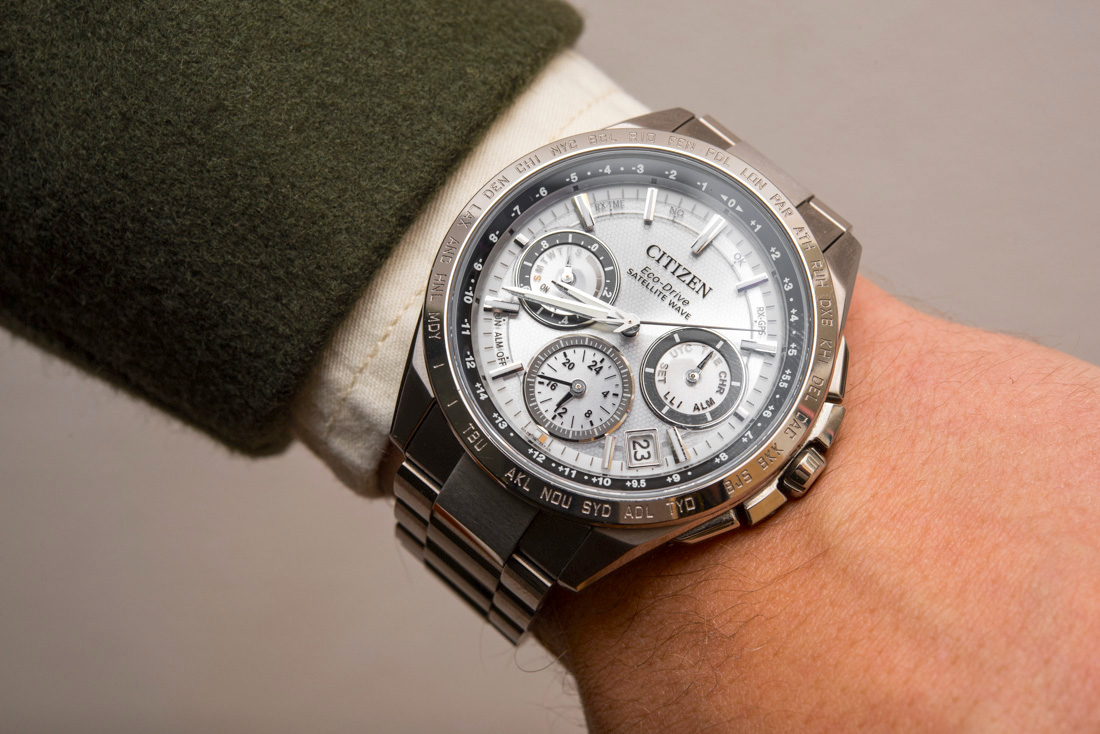
Legibility is excellent as the main hands are perfectly wide and long, with their angled and highly polished edges and lumed centers always (and I do mean always) contrasting nicely against the cool, mostly matte, but subtly satin-shiny grey of the solar-charged dial. The date is nice and large, also easily legible; although it has to be said that if your eyesight to close distances is not the best, reading the smaller numbers and letters in the sub-dials and on the periphery of the dial may be a bit more difficult. That noted, overall legibility is still excellent.
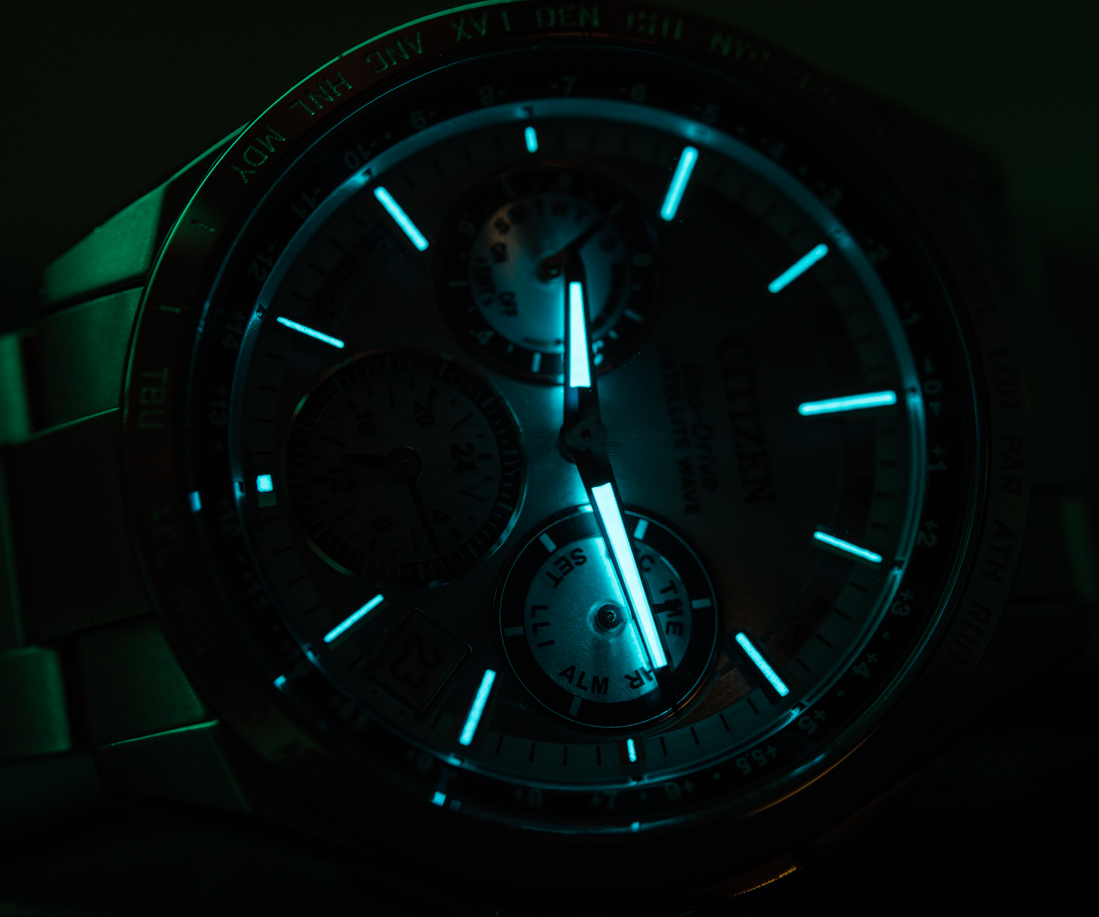
The elegantly reflective indices and hands, as I noted, are also lumed, though the strips of luminescent materials arguably could have been wider – there is no crazy lume-party going on here, just enough luminescence to help you tell what time it is in low-light conditions.
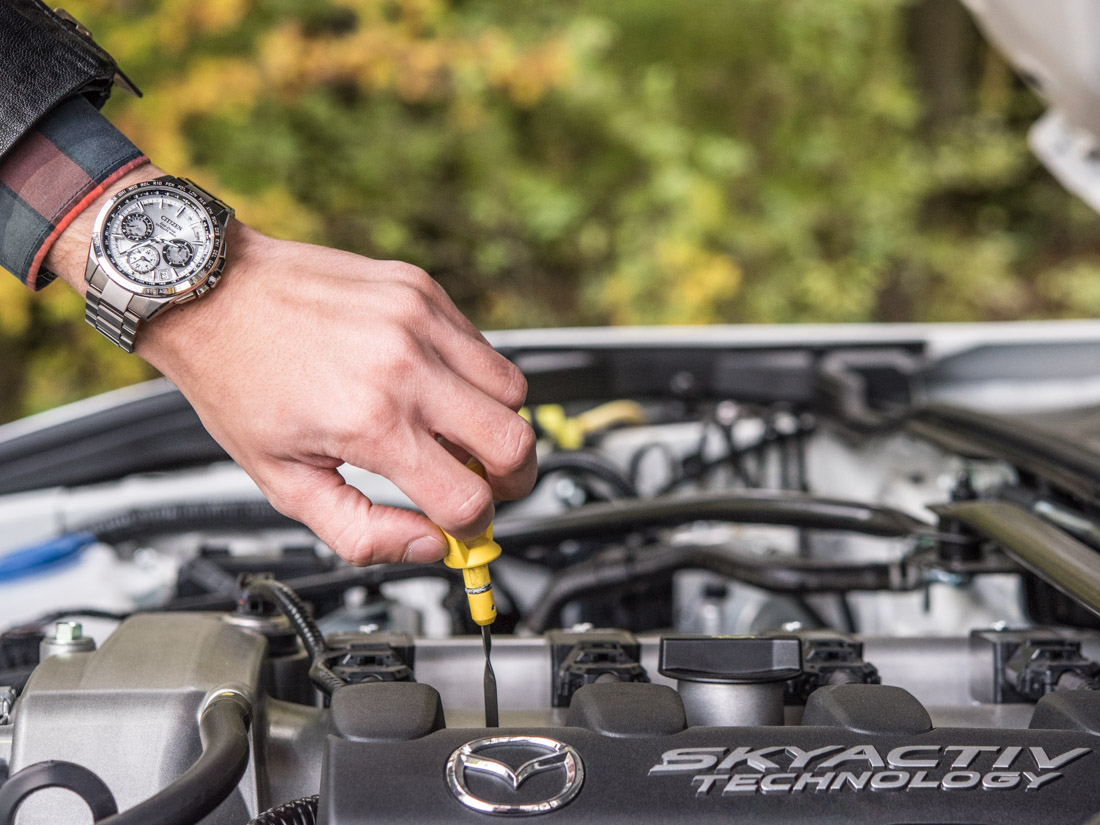
Summary
Technical advancements have made both the car and the watch in our Car & Watch review lighter, more efficient, easier to use and – speaking for the watch, as the car we didn’t have for years to be able to comment – more dependable. Given that I’m a car enthusiast (to put it mildly) and my established and deep appreciation for the Mazda MX-5, the Citizen F900 was sort of an underdog in this test… And yet, it has proven to be a more complete of a package simply by getting more of the small details right.
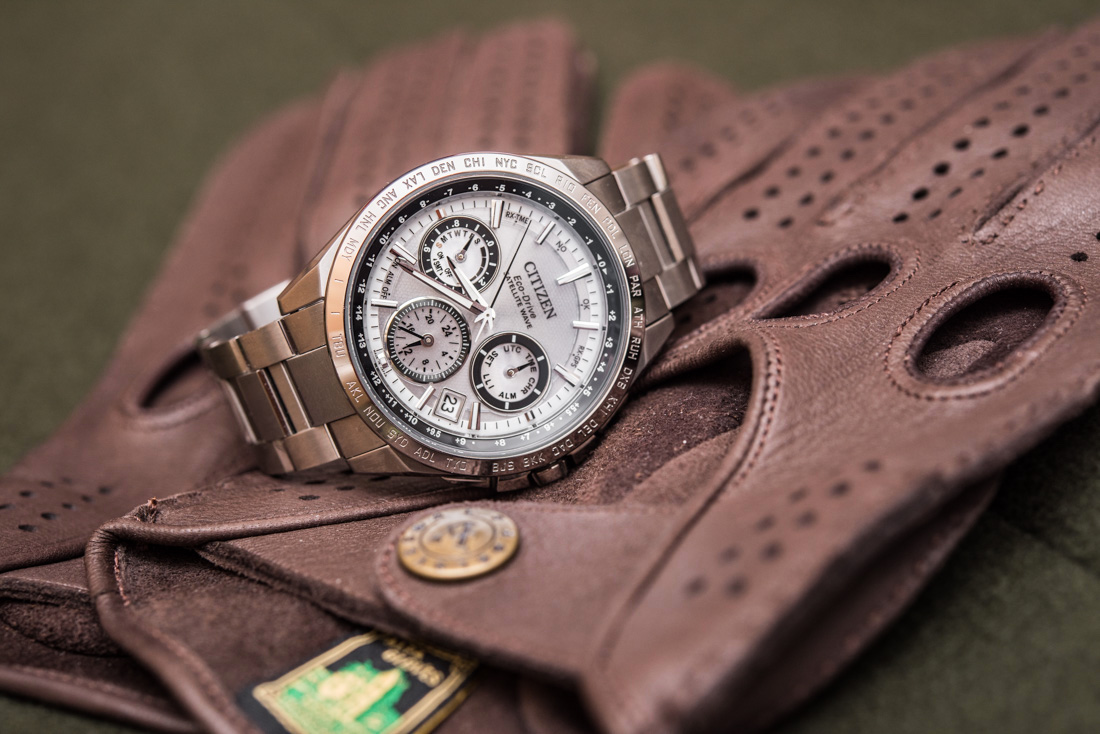
That being said, both the new Mazda MX-5 ND 2.0 and the Citizen Eco-Drive Satellite Wave F900 are class-leading products in their own categories and they still share some key attributes including exceptional workmanship, little to no competition at all, great overall value for money and what I, on a personal note, consider to be a long-lasting appeal stemming from both design and usability.
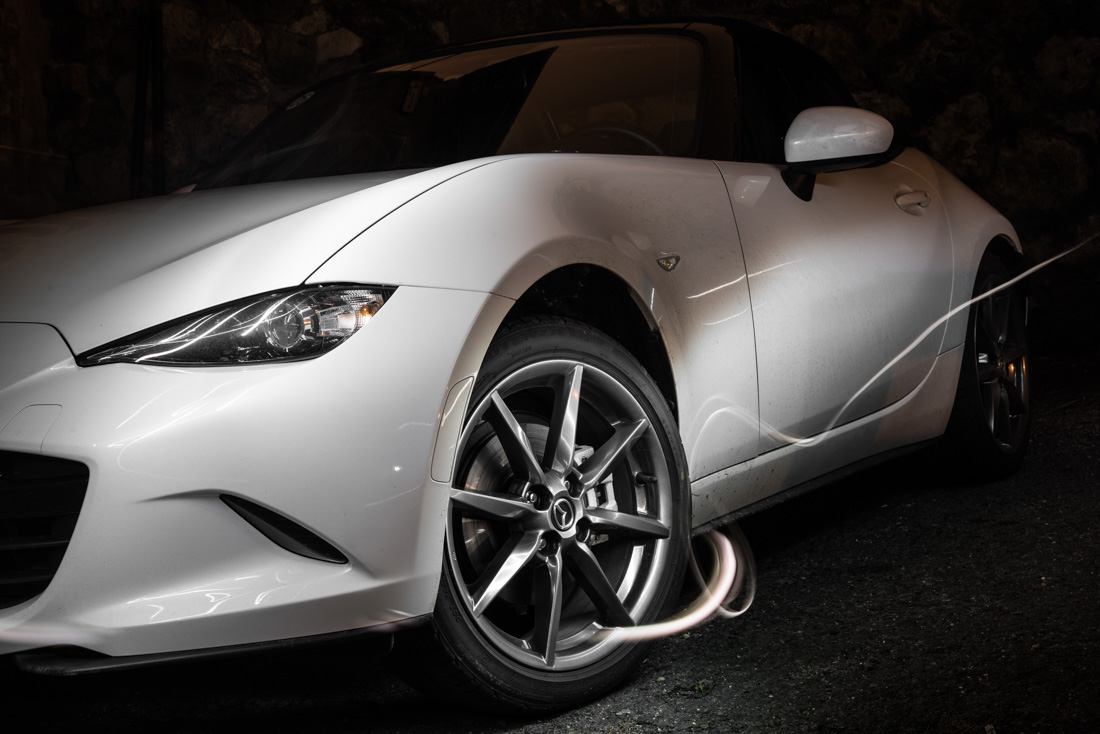
This full-spec Mazda MX-5 ND 2.0 runs for around $29,800, while the price for the Citizen Eco-Drive Satellite Wave F900 reference CC9010-74A is $1,995 – but, as always, you are encouraged to shop around. mazdausa.com | citizenwatch.com
Necessary Data
>Brand: Citizen
>Model: Eco-Drive Satellite Wave F900 reference CC9010-74A
>Price: US $1,995
>Size: 44mm wide
>Would reviewer personally wear it: Yes.
>Friend we’d recommend it to first: Demanding one looking for a universal watch that is reliable, well-made, comfortable, and fares well under all conditions.
>Best characteristic of watch: Wearing comfort, legibility, functionality, durability, and aesthetics of Super Titanium. Wonderful all-rounder.
>Worst characteristic of watch: Lume could be brighter.

